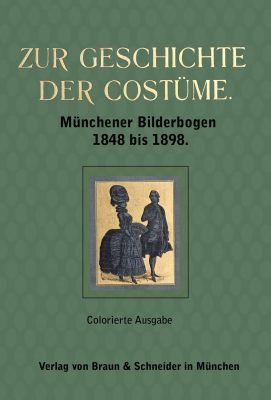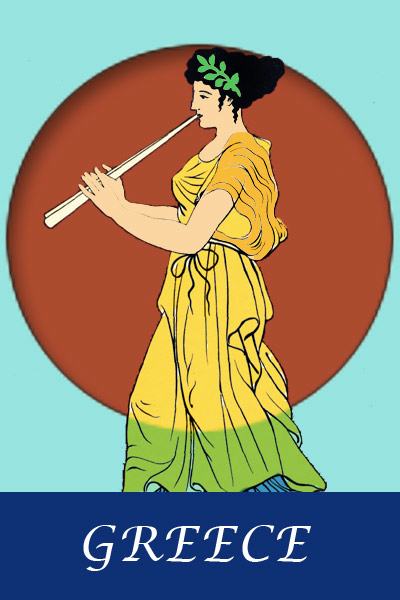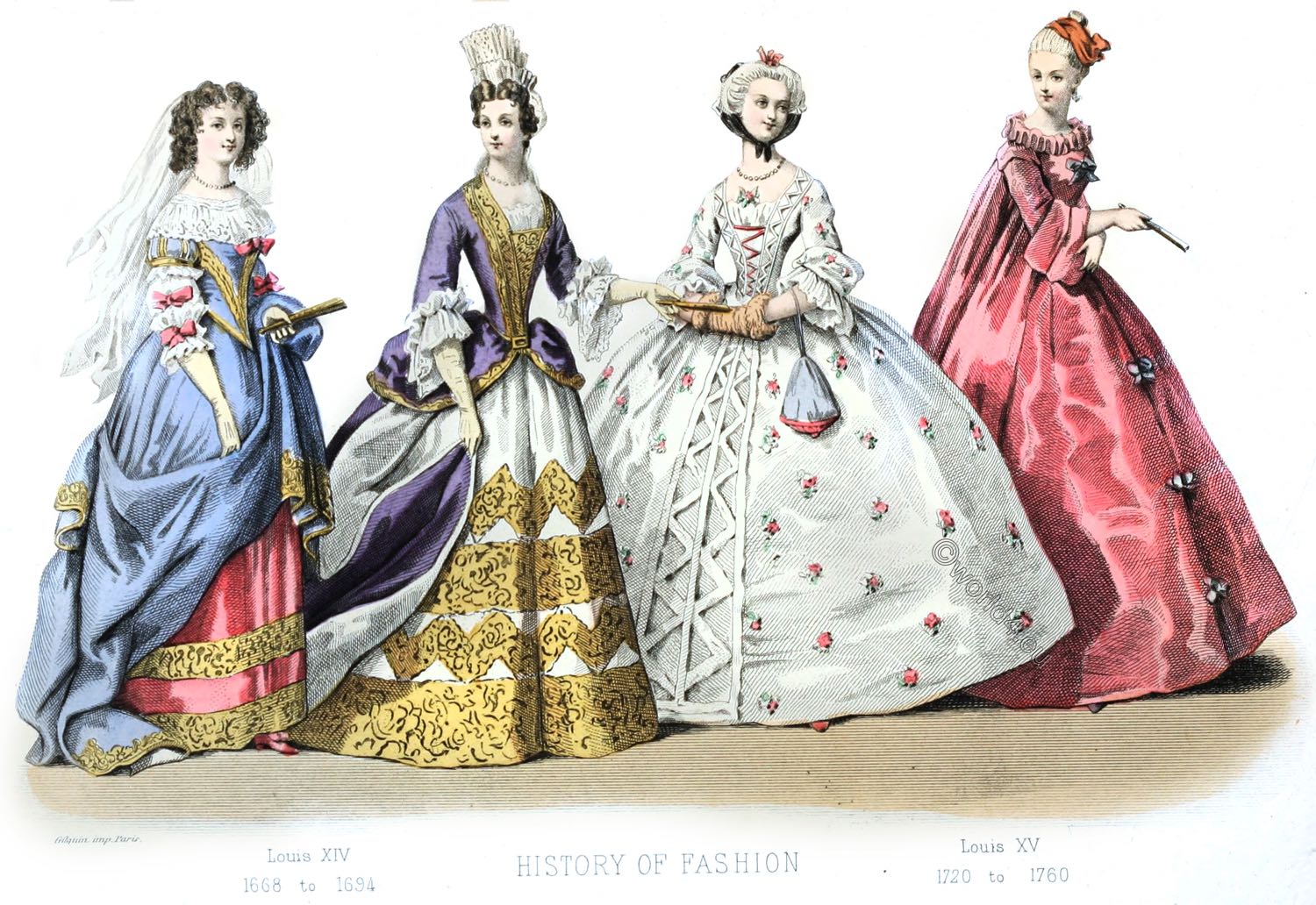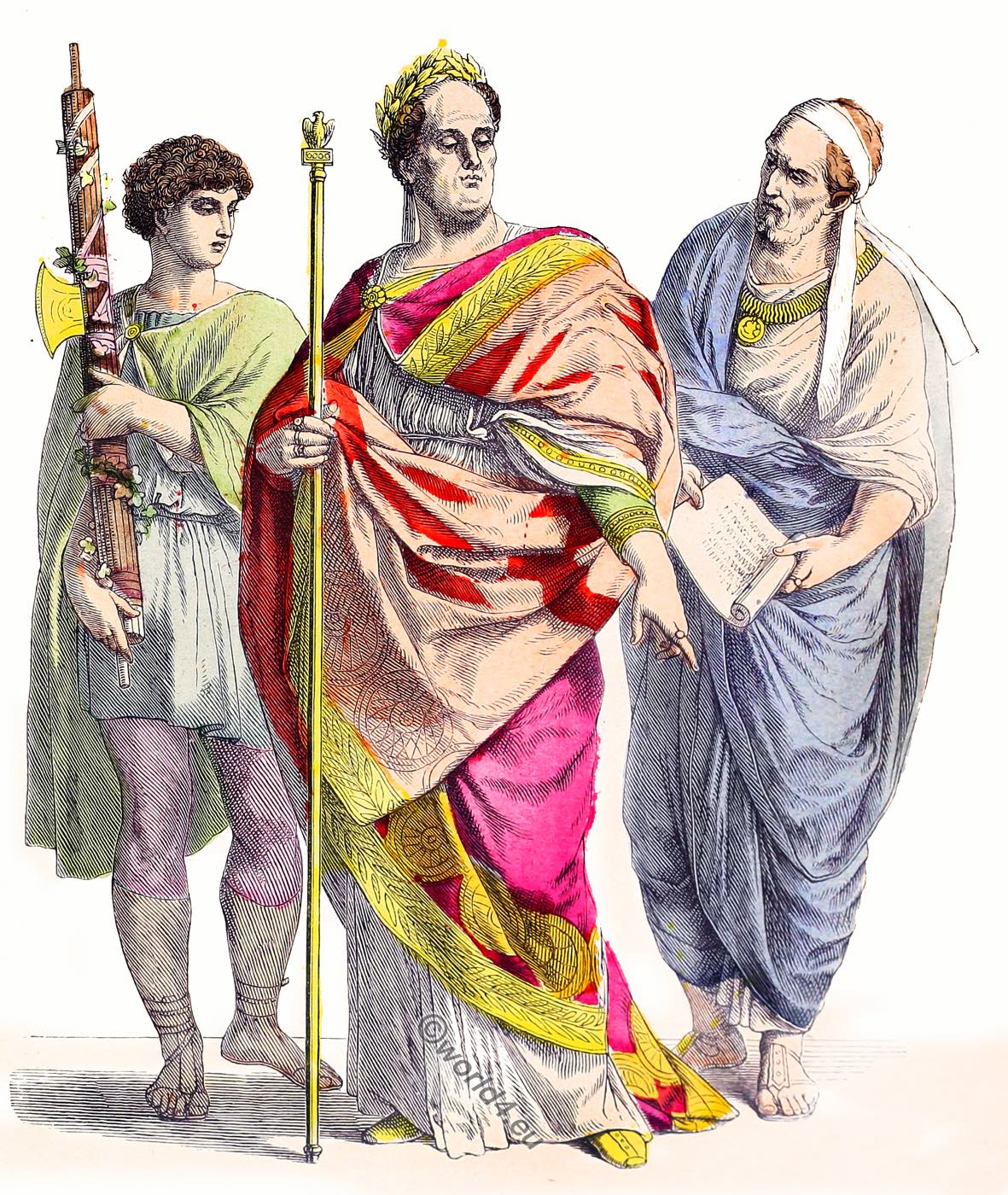Published by Braun & Schneider. Royal Court and University Printing Office of Dr. C. Wolf & Sohn in Munich.
The Munich Picture Gallery 1848 to 1898. On the history of costumes.
Introduction
This famous costume pictures were published in weekly editions in the years between 1858 and 1898. The title was: Munich pictures sheet (Münchener Bilderbogen), the history of costumes. Edited and published by Kaspar Braun & Friedrich Schneider in Munich.
A total of 125 sheets appeared with each 4 costume pictures from the different fashion eras. The people and their costumes were often presented in scenic stagings. The images appeared as black and white or colored woodcut and served next to the function as teaching images for the lower and middle classes of society as a wall decoration.
It started with the peoples of antiquity, Egyptians, Medes, Greece, Rome, the Middle Ages, Renaissance and modern times. The illustration of the costumes is one of the best ever created. The drawings are shown a maximum of detail and lifelike reproduction. The costume images were later bound as books and republished. The performing artists were William Dietz, Count Franz von Poch, Carl Appold, Wilhelm Busch, Lothar Meggendorfer, Anton Kraus, Moritz von Schwind, Edward Illke to name just a few of more than hundred artists.
Accordingly, the costume templates are ideal for an introductory-style search. What we call today the fast changing fashion, consisted of mankind in earlier decades, in larger time intervals. The level of detail in the context of costume eras is extremely high. For example, the now-forgotten flea fur, unthinkable today. During the Middle Ages in the face of rudimentary hygiene, an indispensable fashion accessory. Used by the citizen up to the queen. Also faith is reflected in the details again, for example in the form of amulets that were worn as jewelry or necklaces.
The origin of this costume pictures goes back among other things, to the collection of Franz von Lipperheide † 30. Juli 1906. Born 1813 in Berlebung Germany, he learned the trade of bookseller, then became publisher and editor of the fashion magazine “Fashion World”. Many well-known artists made on his behalf to special costume drawings, which were then published among others also in Munich pictures sheet. He also founded a now-famous costume library, which was later transferred to the Museum of Applied Arts. It is today the world’s biggest collection on the cultural history of clothing and fashion. It is constantly expanded through donations and acquisitions, shows every year one or more exhibitions, and is publicly available.
The collection for „Costume Science” in 1896 had a population of 686 oil paintings, 200 miniature portraits, 2750 drawings, 23,750 printing and reproduction graphics, 2580 photographs, 5560 monographs, 840 almanacs and 2185 magazines. 1990 is the holdings of the costume library 31,800 monographs and journals, 167 albums with drawings, 81 albums with photographs, approximately 100,000 leaf graphic, 8000 drawings and 36,000 fashion photographs. (Source Wikipedia)
Ancient costumes: Rome, Greeks, Assyrians, Medes, Jewish and Persians.

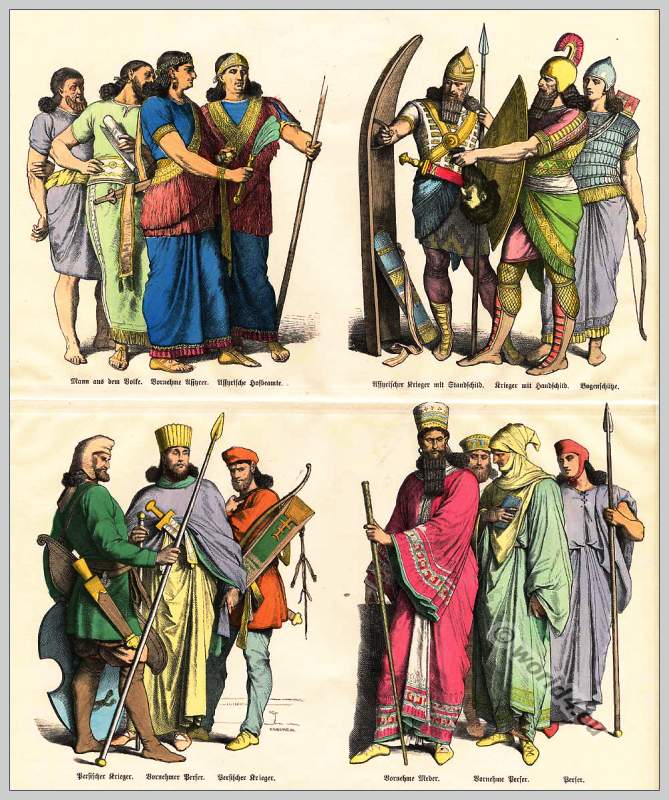
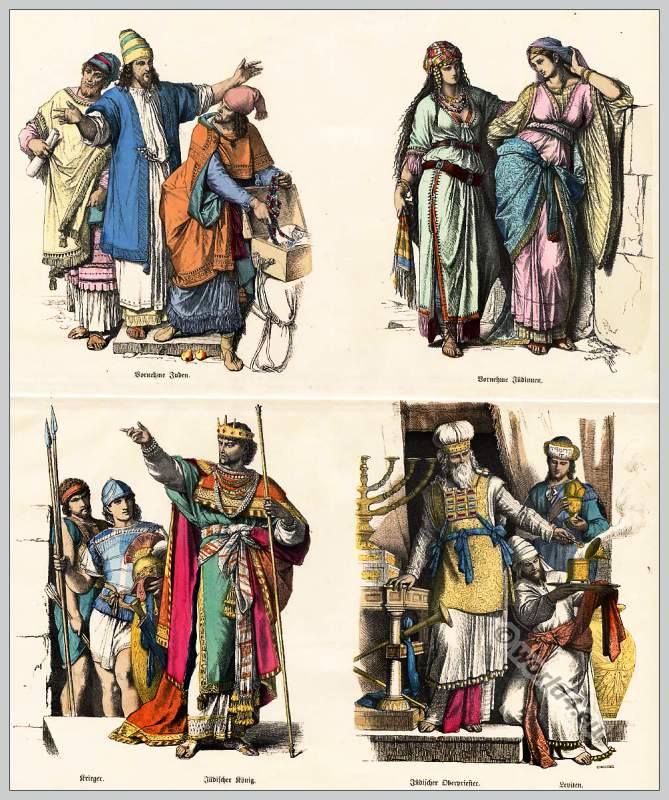
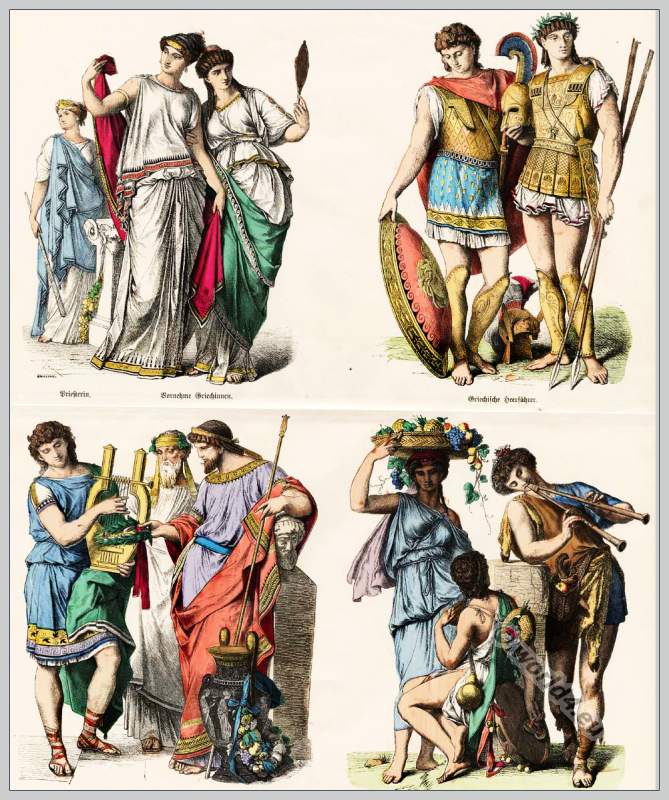
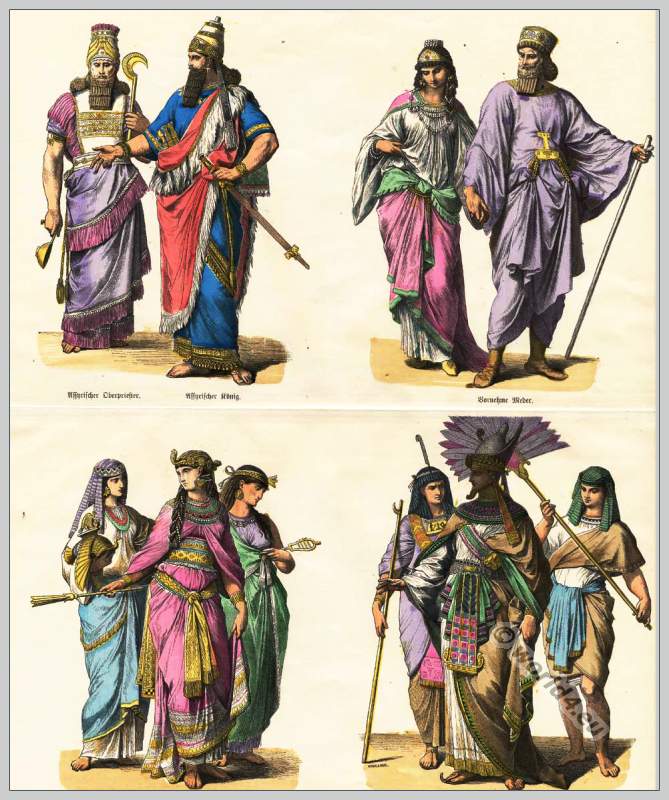
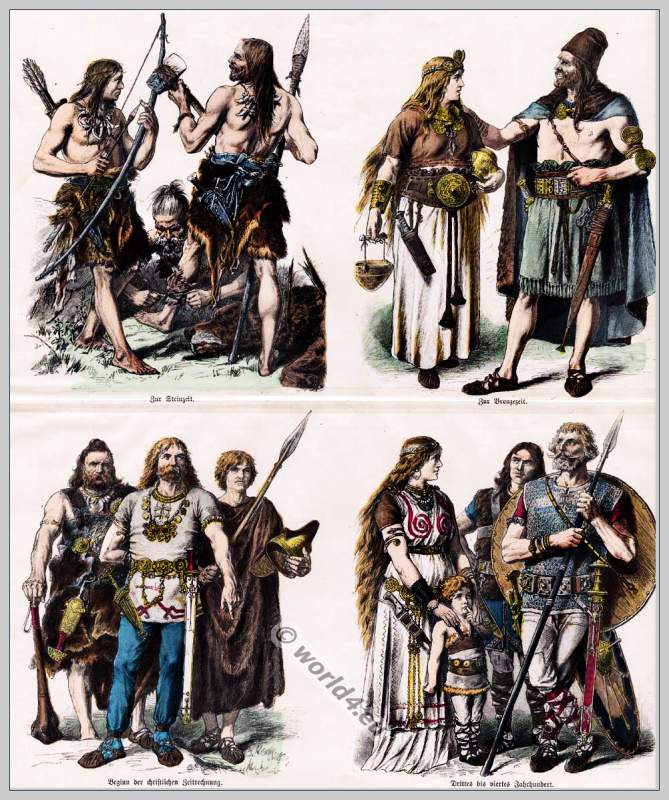
Costume Plates Ancient:
- Ancient Rome.
- Assyrians, Medes and Persians in ancient times.
- Jewish Clothing in the ancient world.
- Clothing of the Greek in ancient times.
- Assyrian, Egyptians and Medes Costumes in pre-Christian times.
- Ancient Germans, Teutons Clothing. From Stone Age to the 4th century.
Early Middle Ages: Byzantine, Carolingian, Christians, Arabian, Frankish.
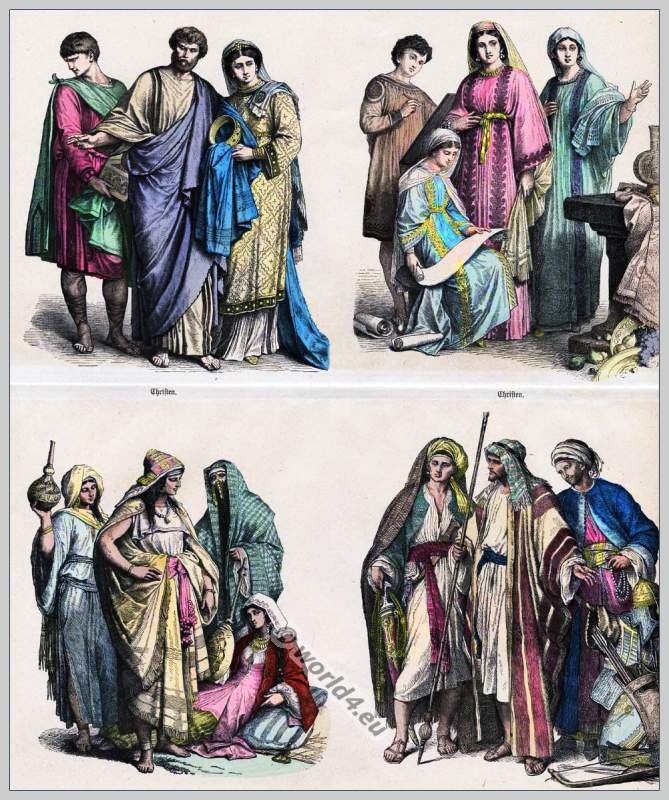
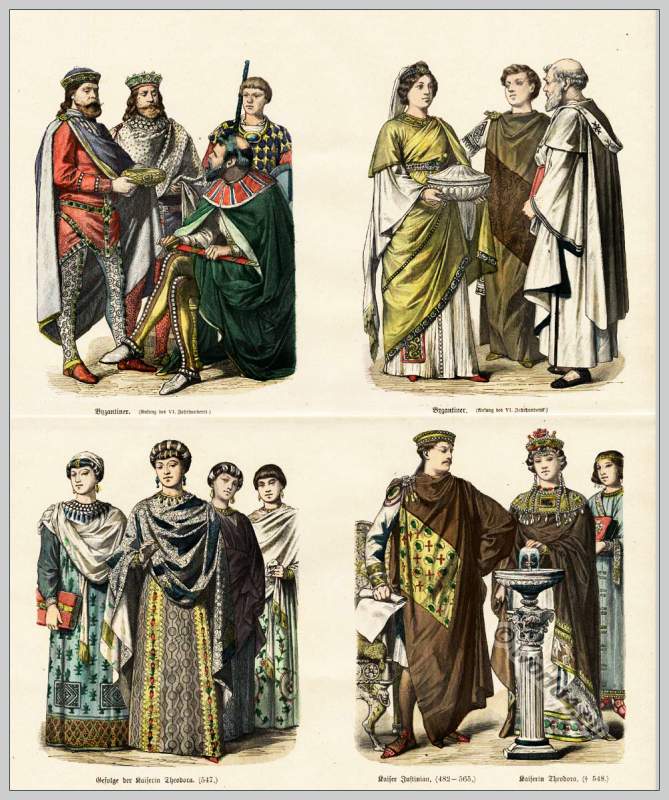
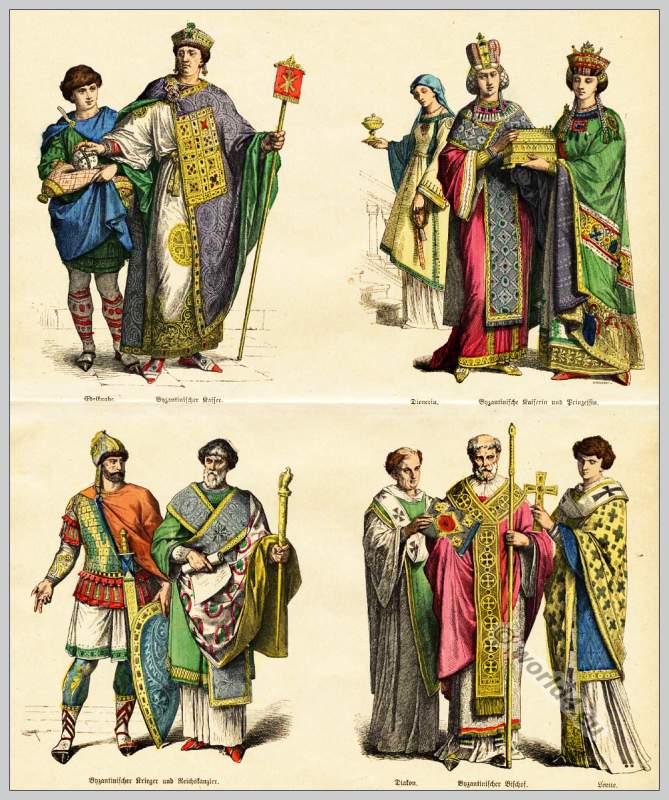
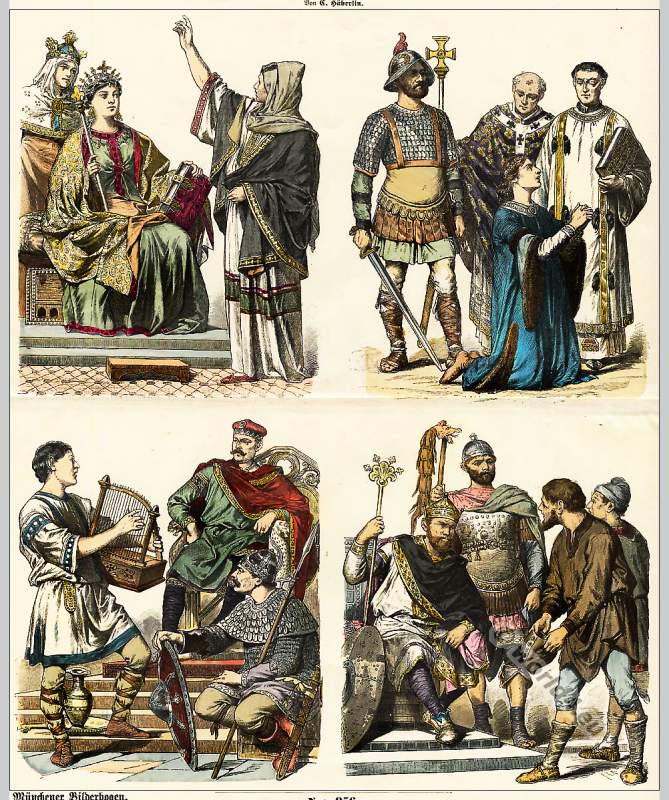
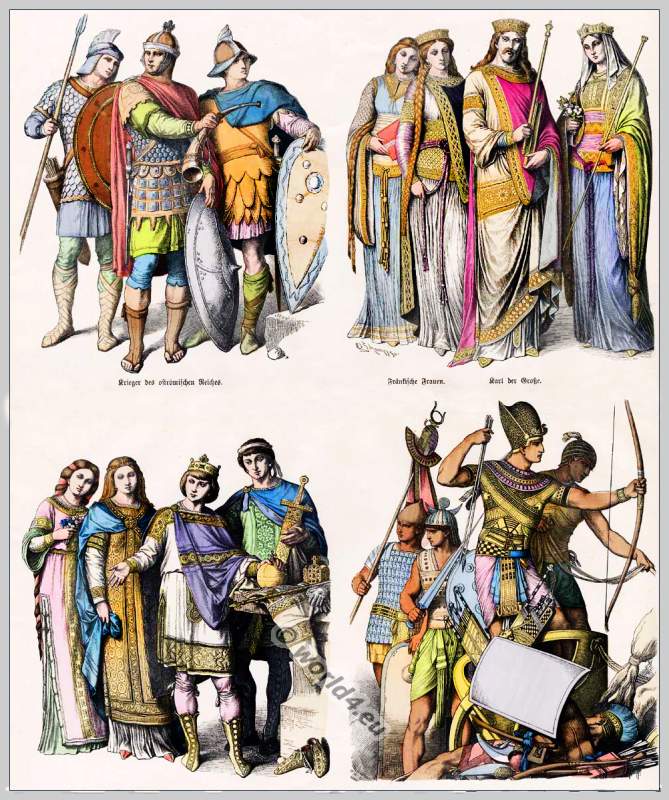
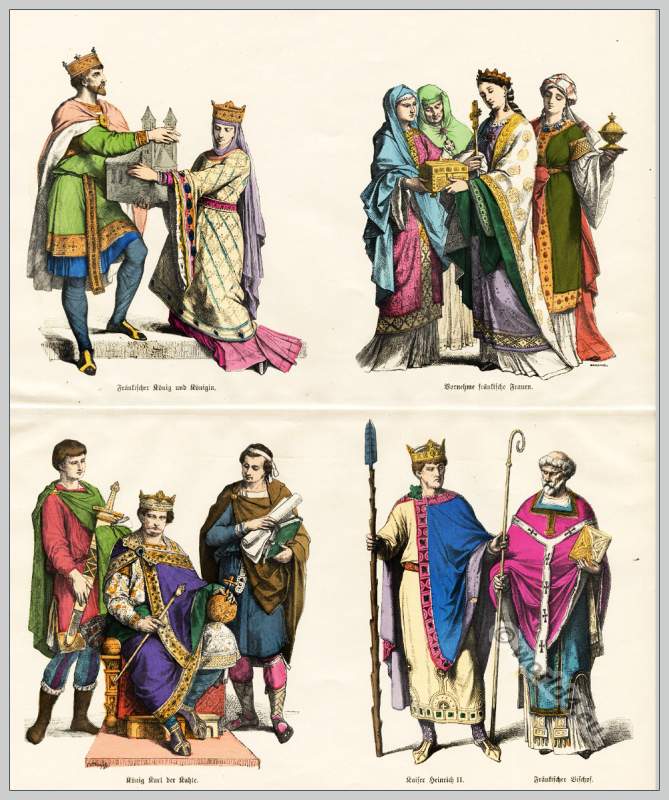
Description Costume History Early Middle Ages 4th to 10th centuries
- Christian and Arab clothes 4th to 6th Century.
- Byzantines in the first half of the 5th century.
- Clothes in the Byzantine Empire. First half of the VI. Century.
- Carolingians in the 7th and 8 Century.
- Medieval Clothes in 5th to 10th Century.
- Franks dress of the 10th Century.
Costumes 11th – 14th century.
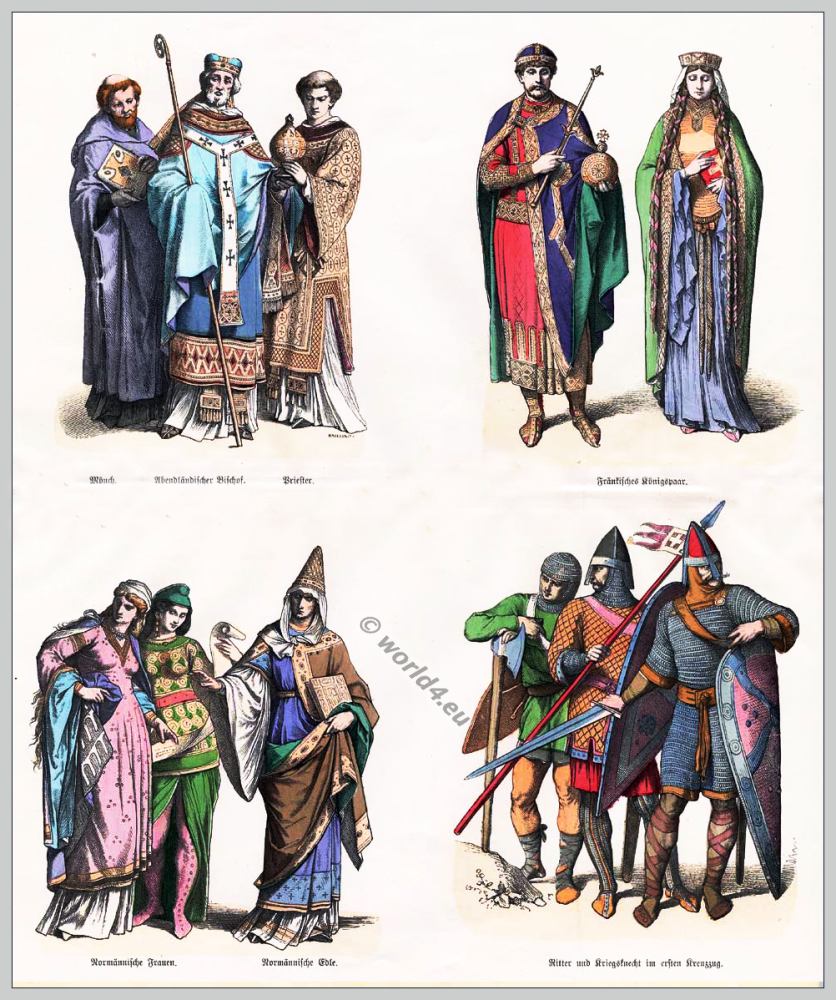
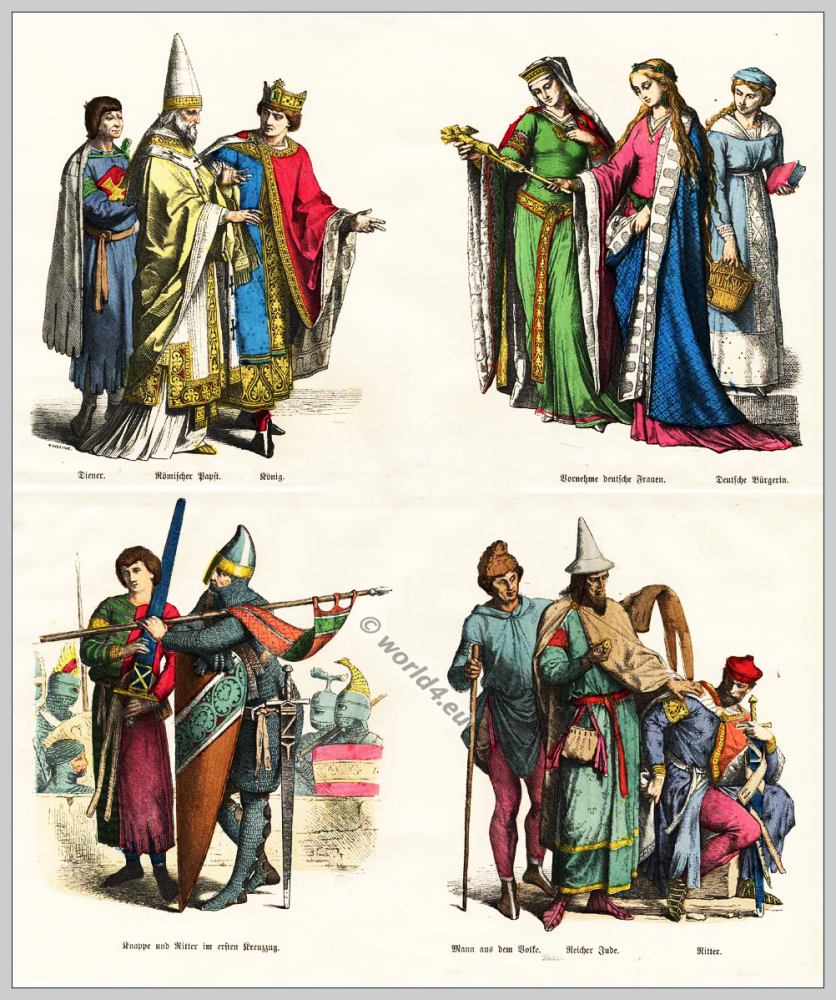
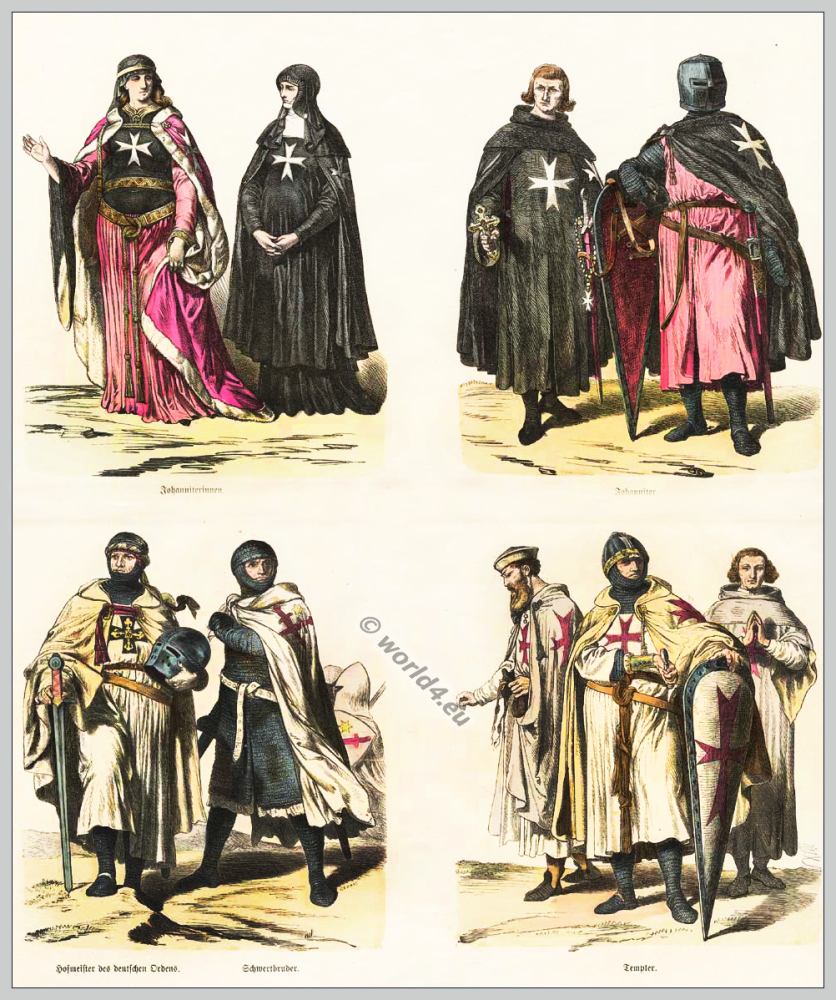
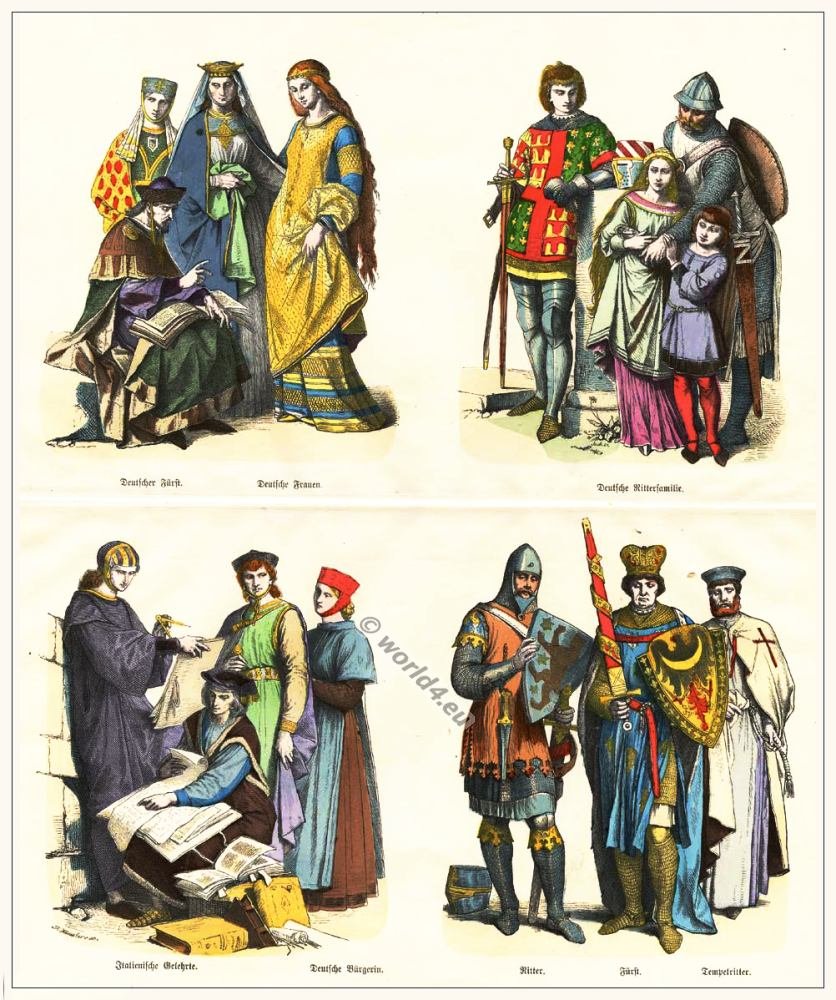


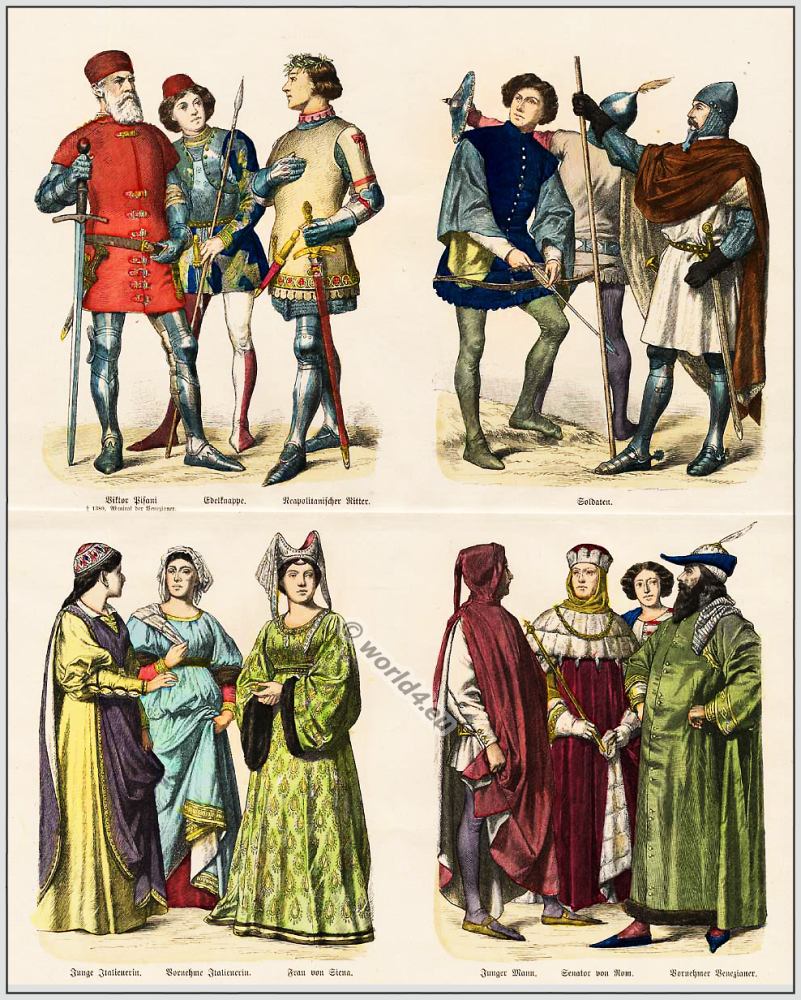
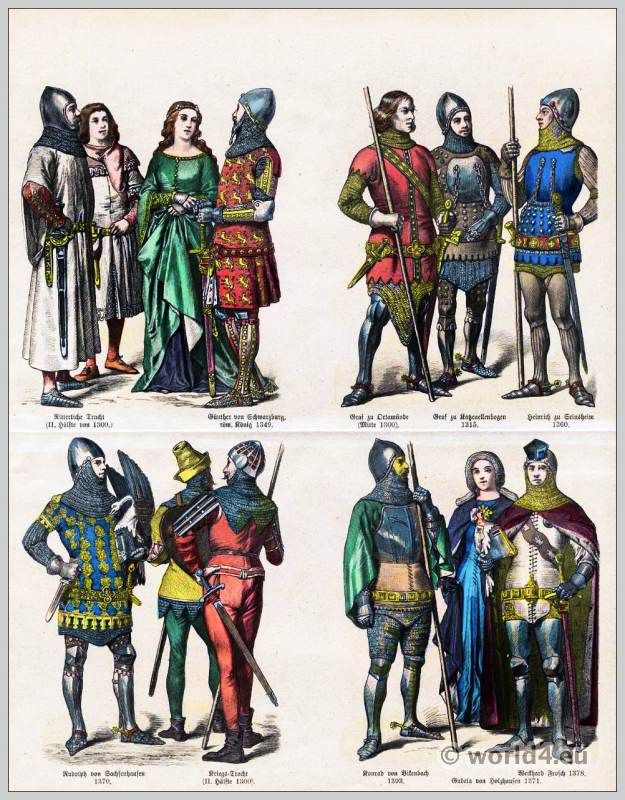
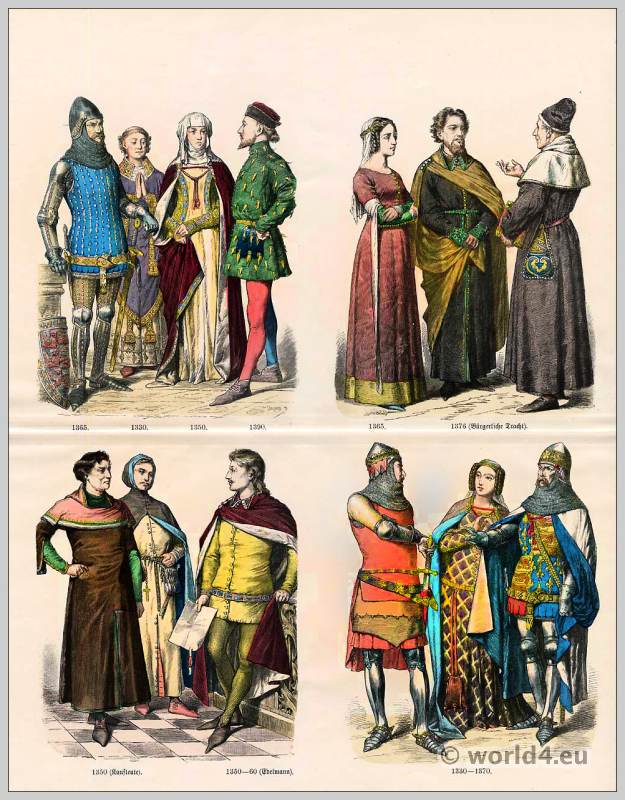
Description Costume history eleventh to fourteenth century.
- Costume 11th century. Monastic, Normans, Crusaders, Nobility.
- 12th century clothing. Nobility, Pope, Jewish, Crusader.
- Clothing of the Crusaders in the 12th and 13 Century.
- Medieval German and Italian clothing in the 13th Century.
- German clothing in the 14th Century.
- German and English costumes 14th century
- Italian 14th century clothing. Second half of the XIV century.
- German costumes 14th century.
- English fashion in the 14th century.
Costumes 15th – 16th Century.

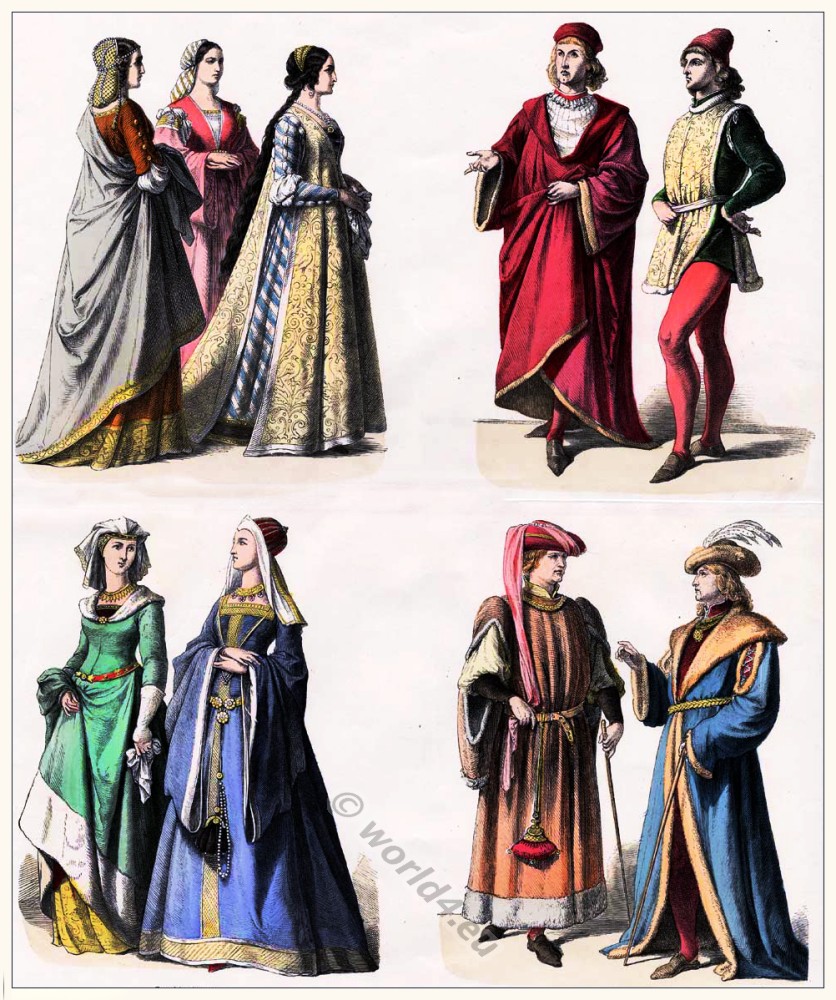
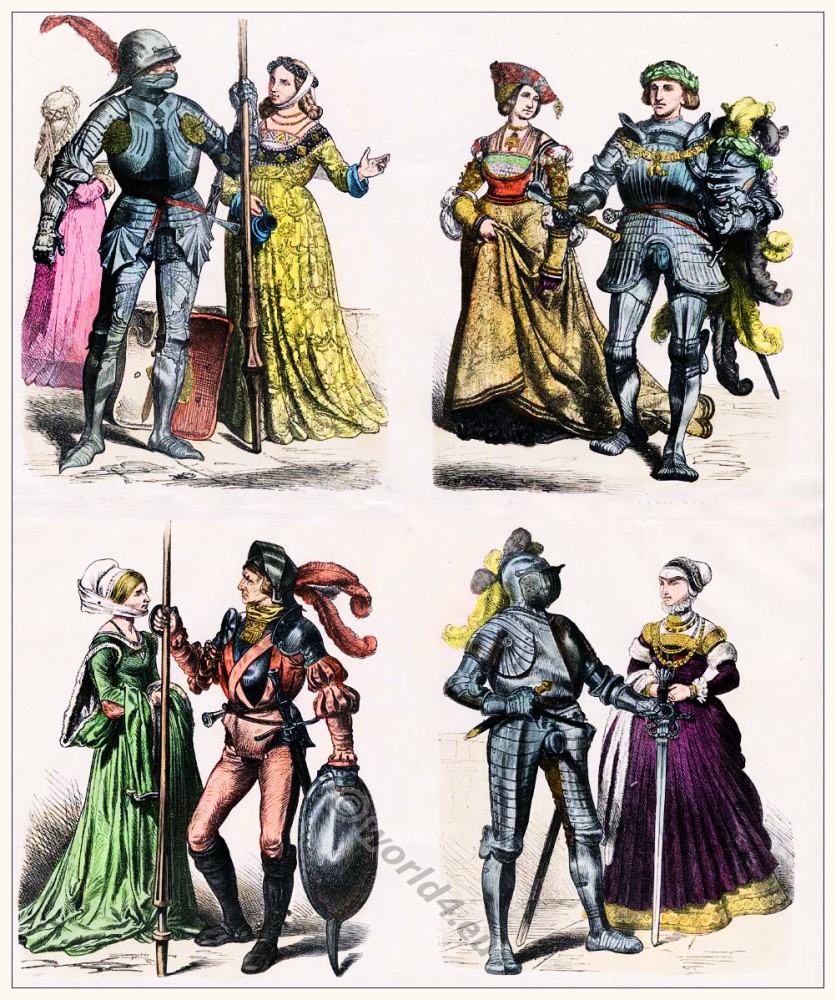
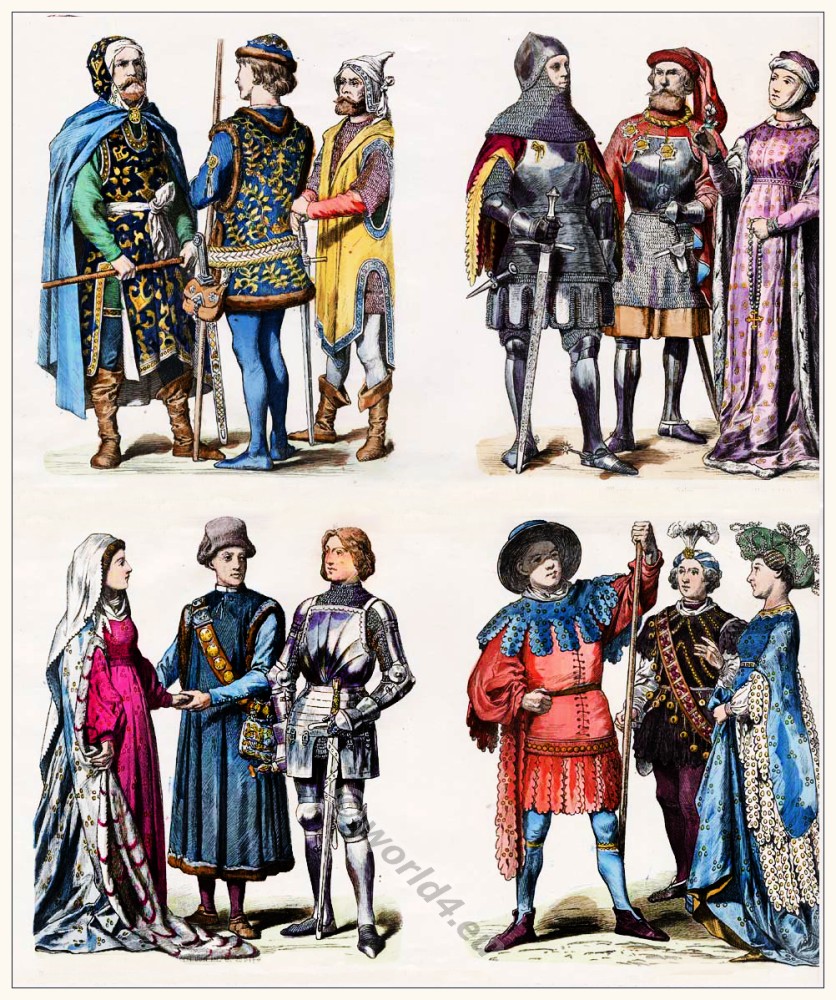
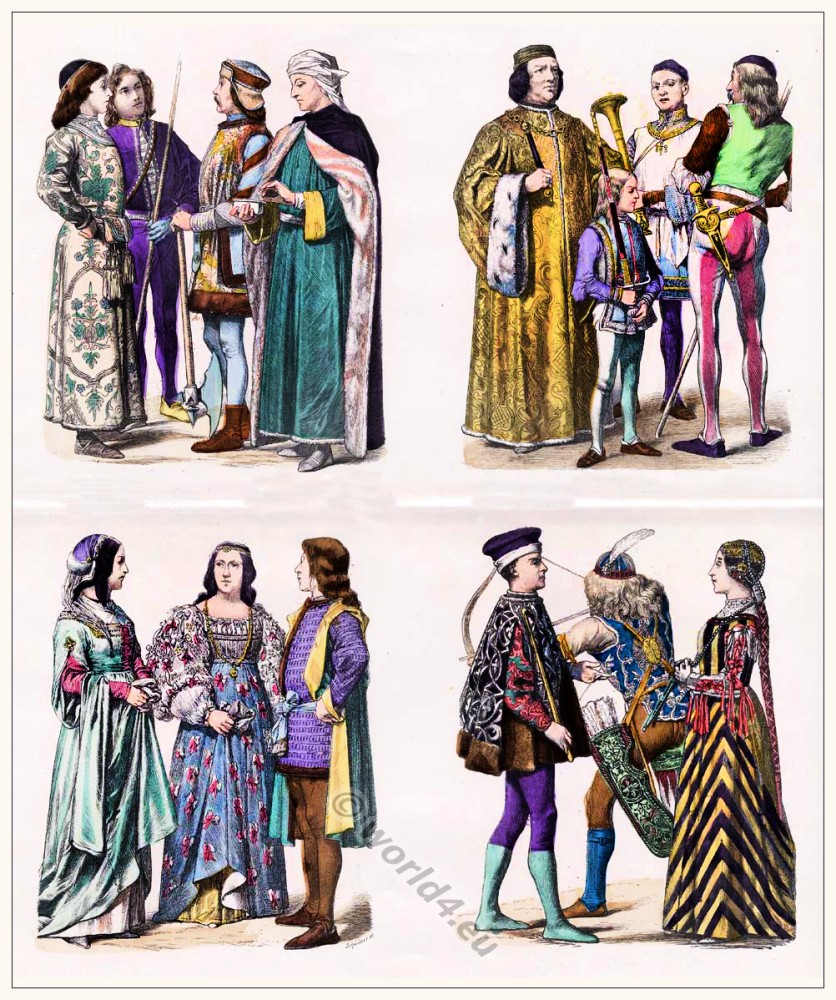
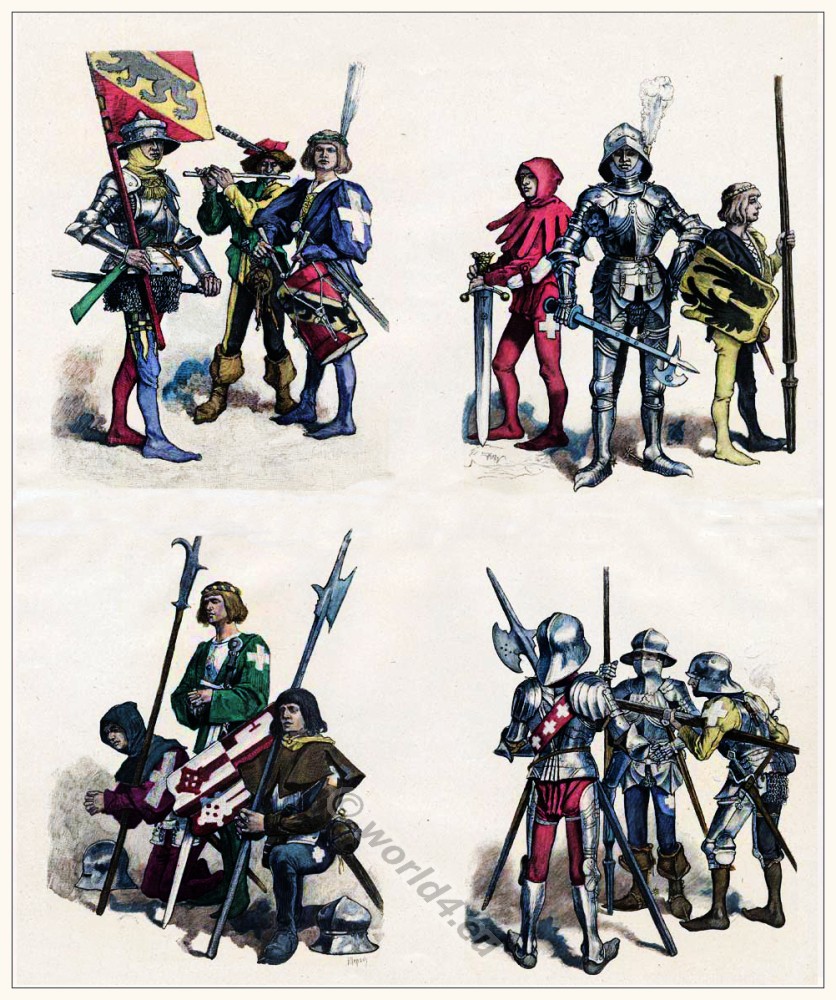
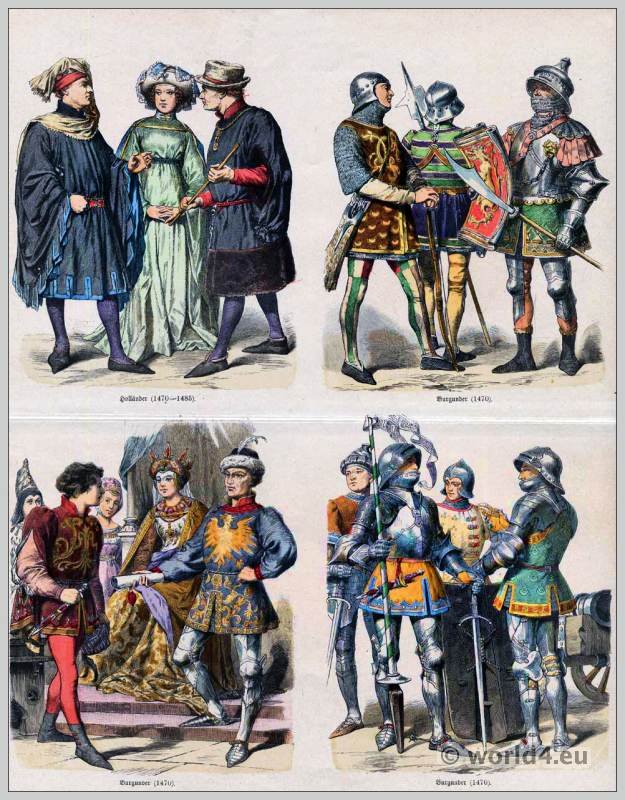

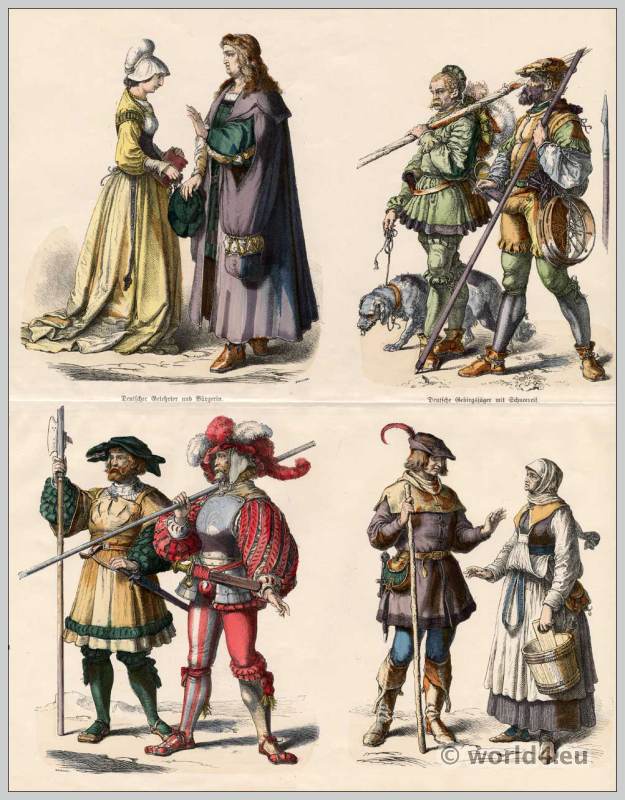
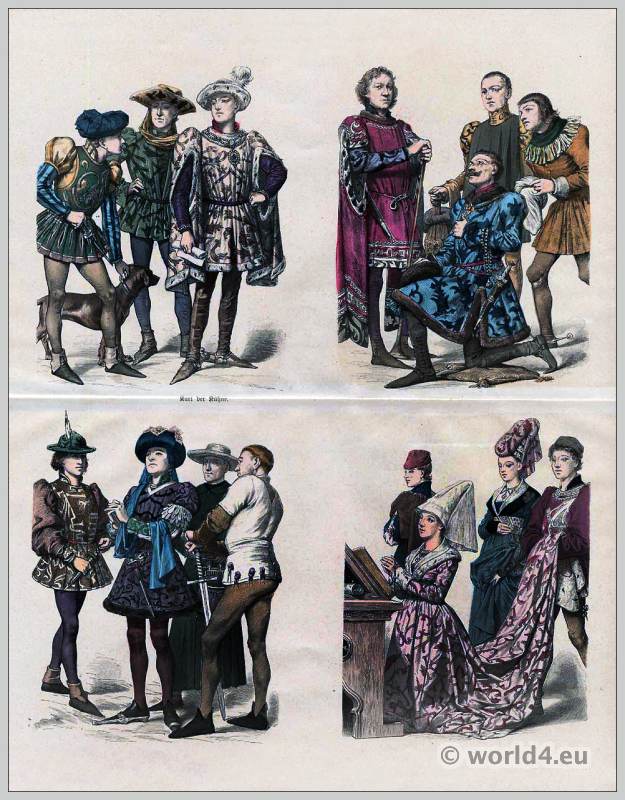
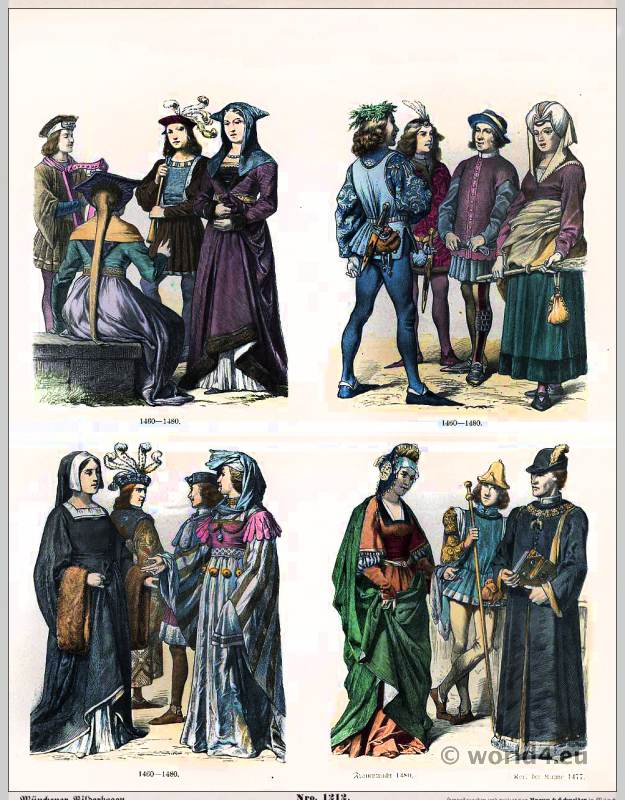
Description Costume History XV and XVI century.
- French and German burgundy costumes 15th century.
- Italian, German costumes 15th century. First half of the 15th century
- German knights, nobel women 15th, 16th century.
- German fashion in the 15th century
- Italian renaissance costumes. 15th century
- Swiss military costumes in 15th century.
- Dutch citizens costumes and burgundy fashion end of the 15th century.
- English and french fashion in the 15th century.
- Burgundy fashion 1450.
- French costumes 15th century.
Costumes 16th – 17th Century.
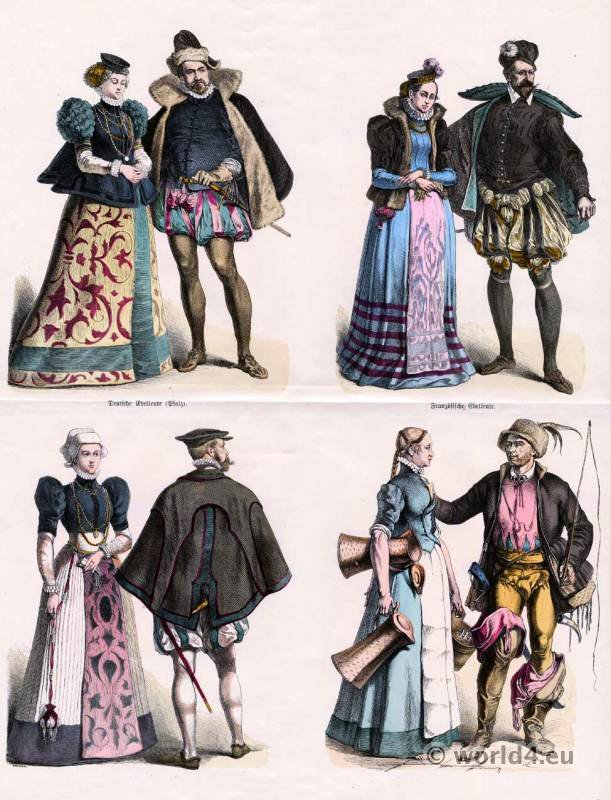

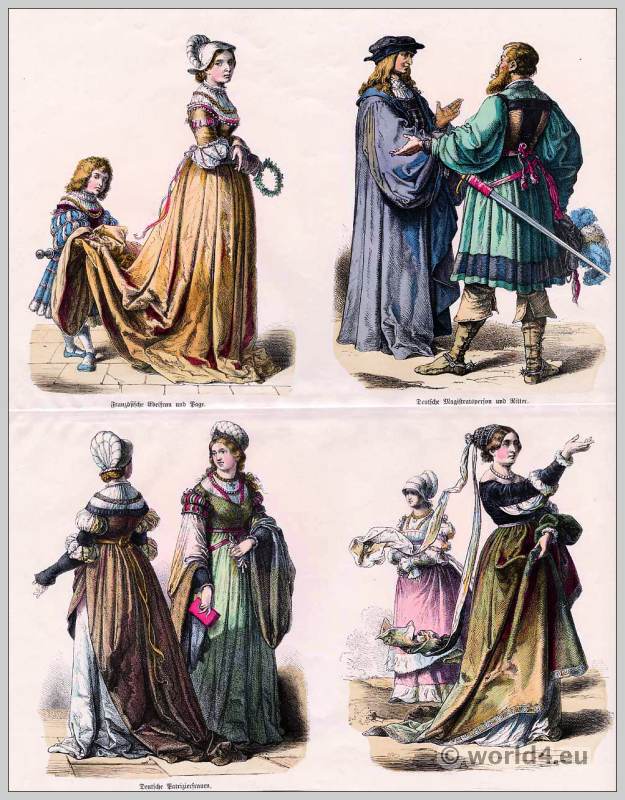
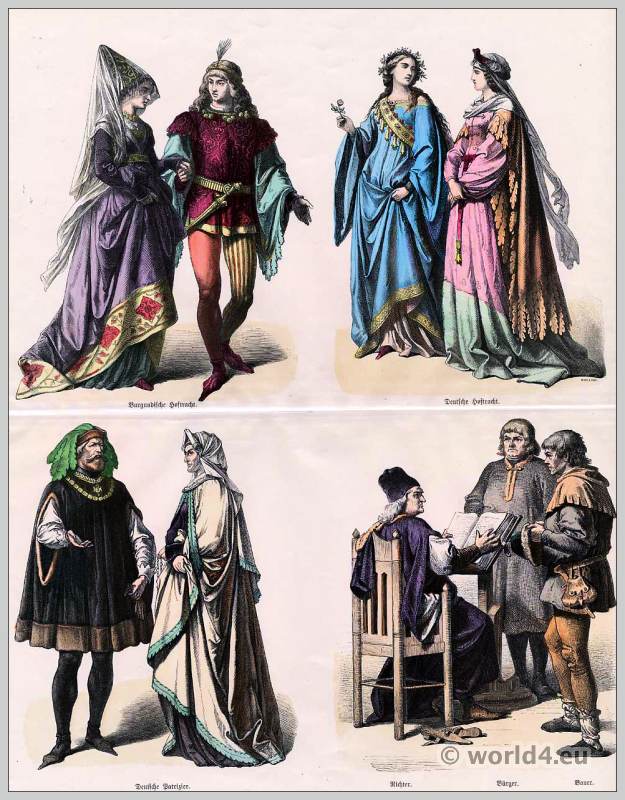
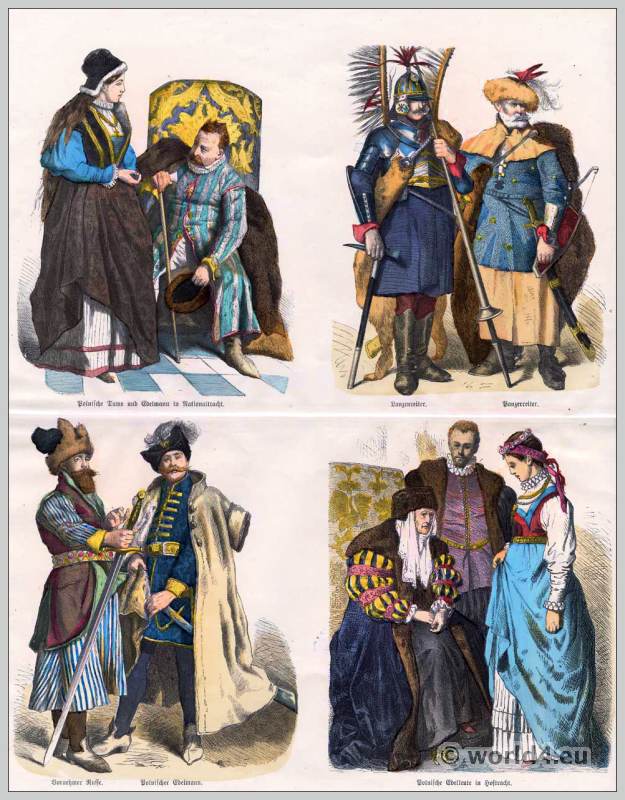
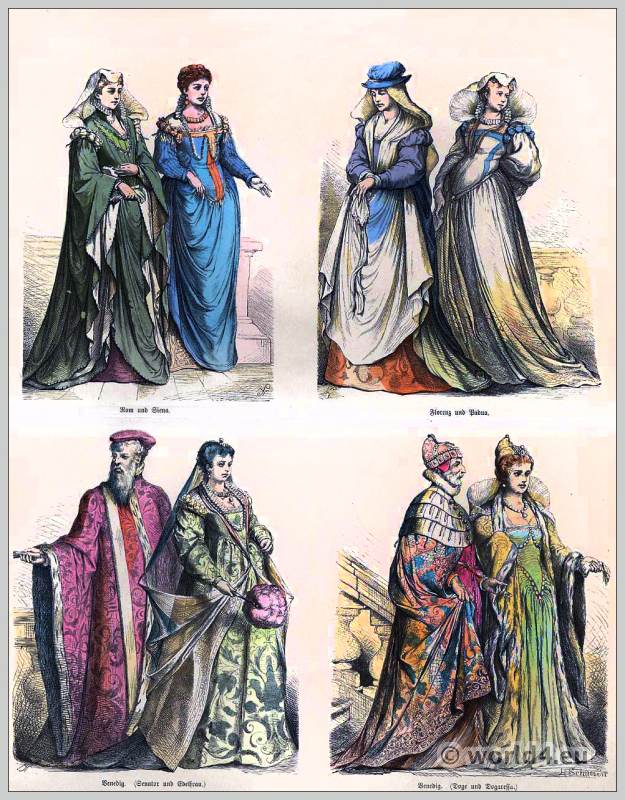
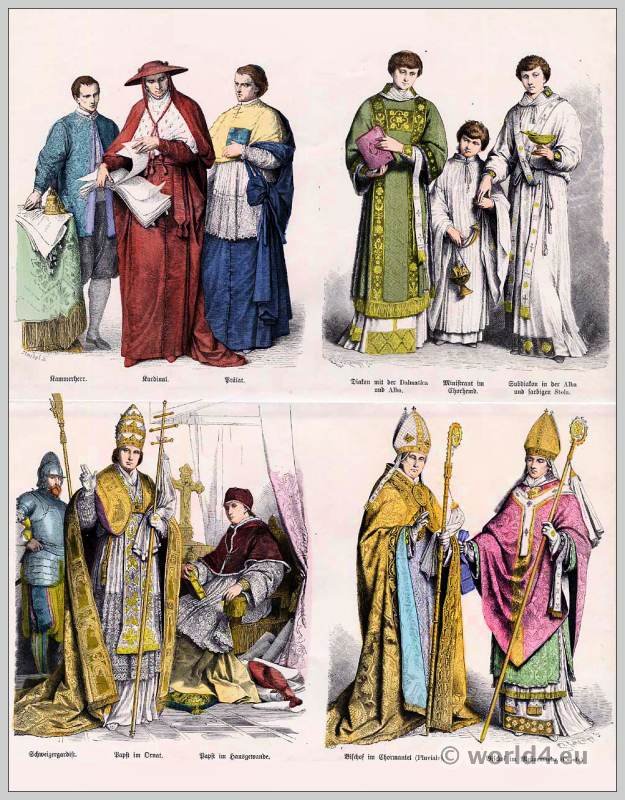
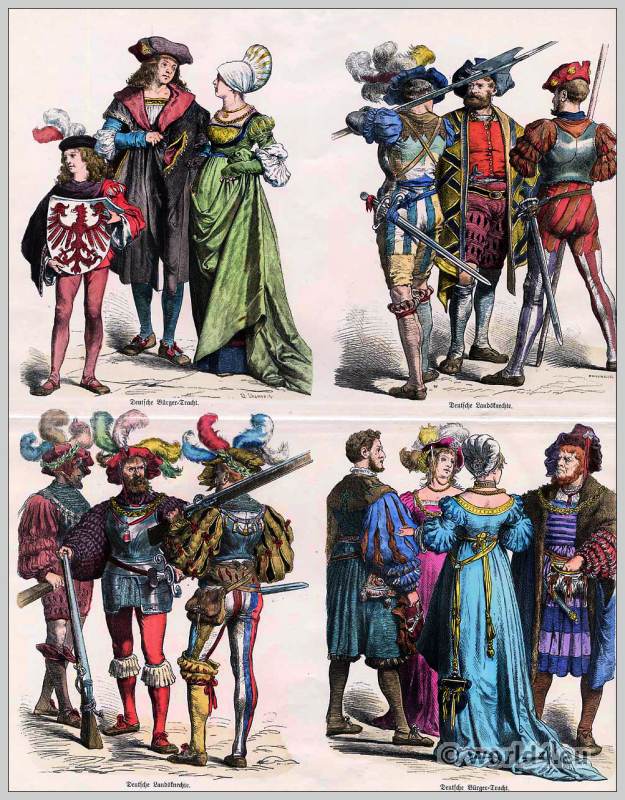

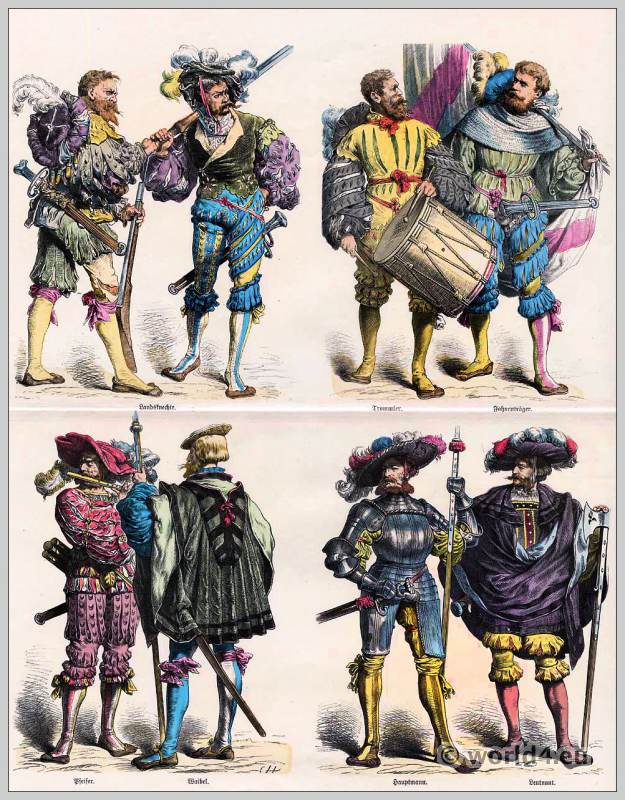
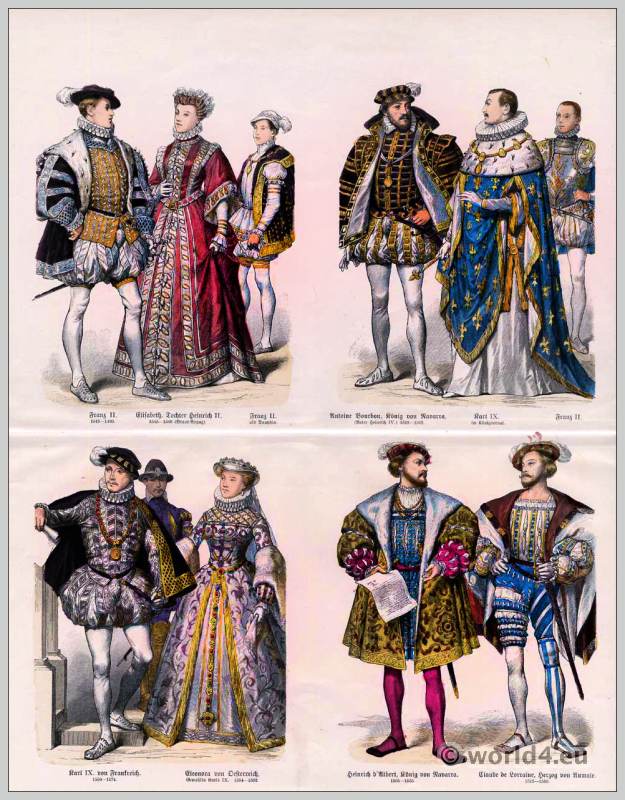
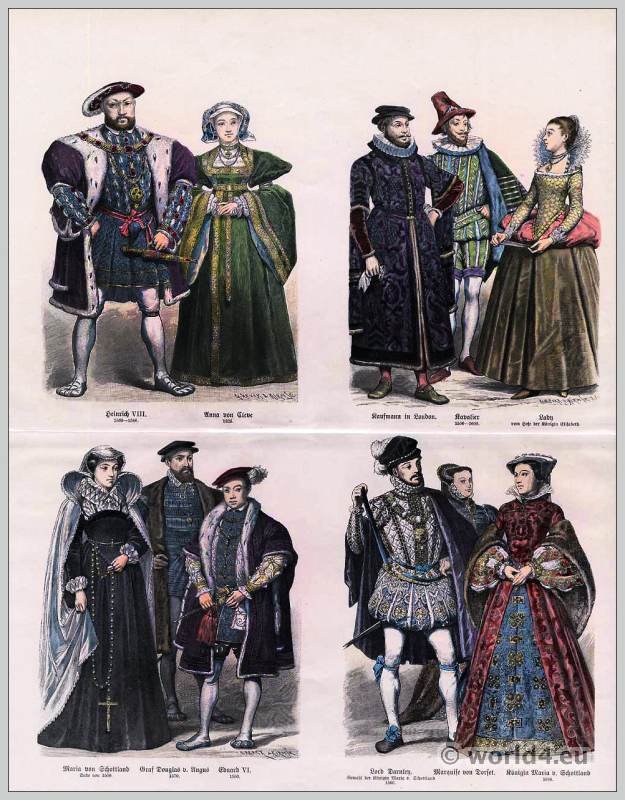

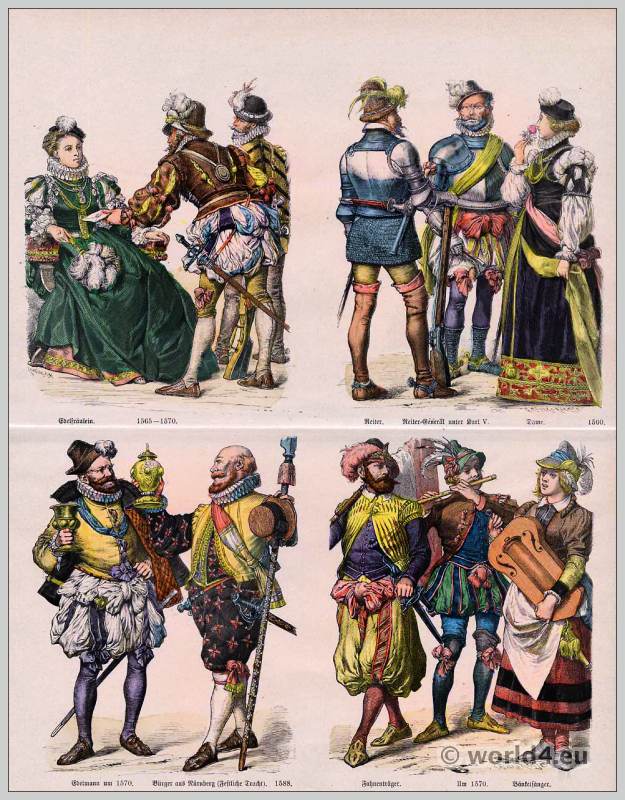
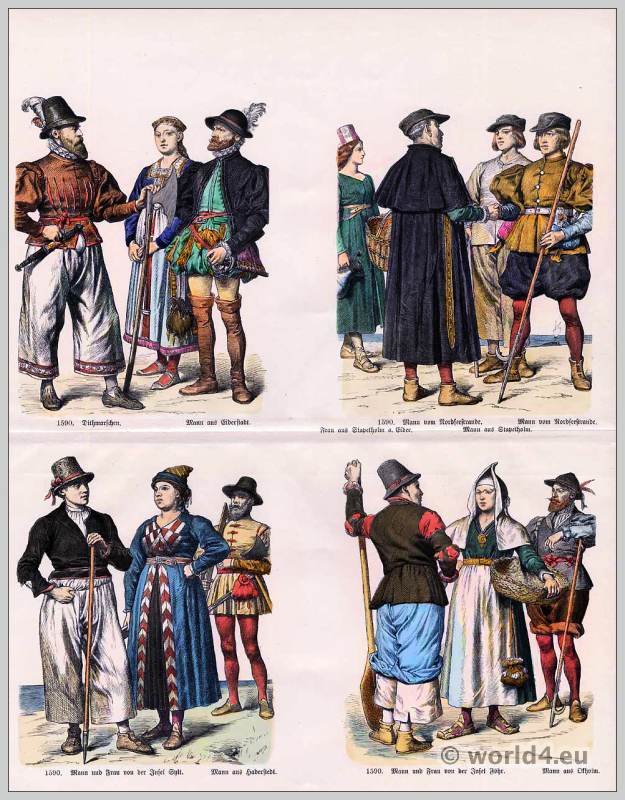
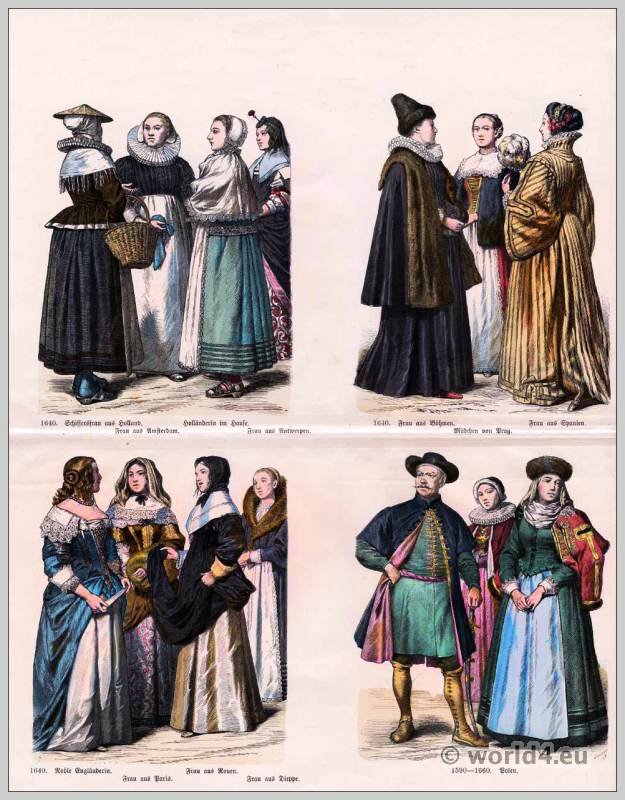
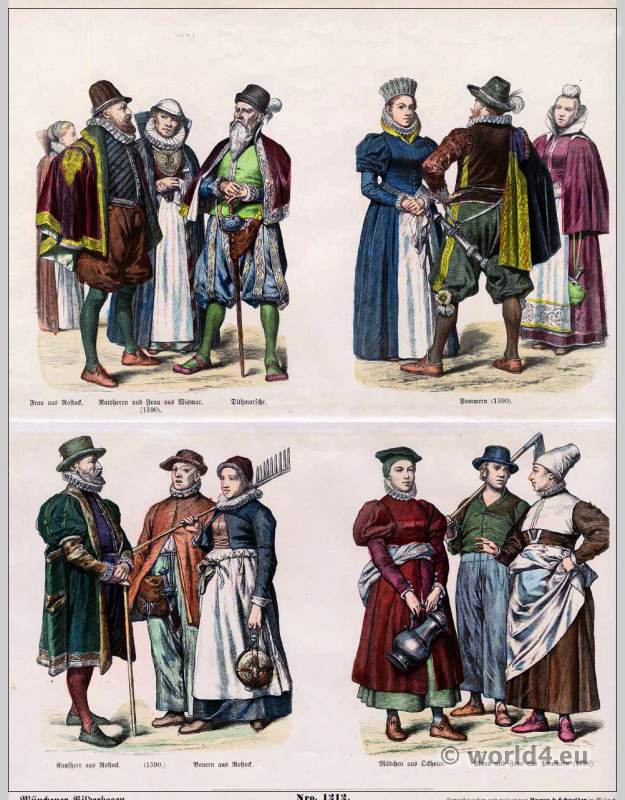
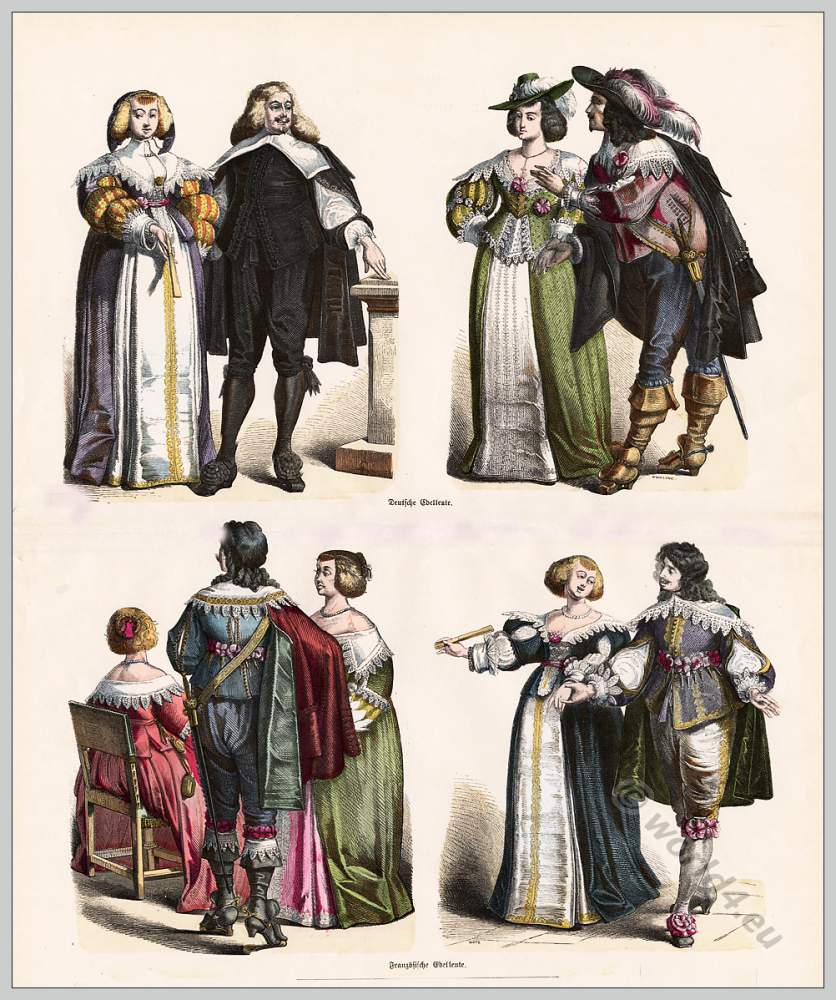
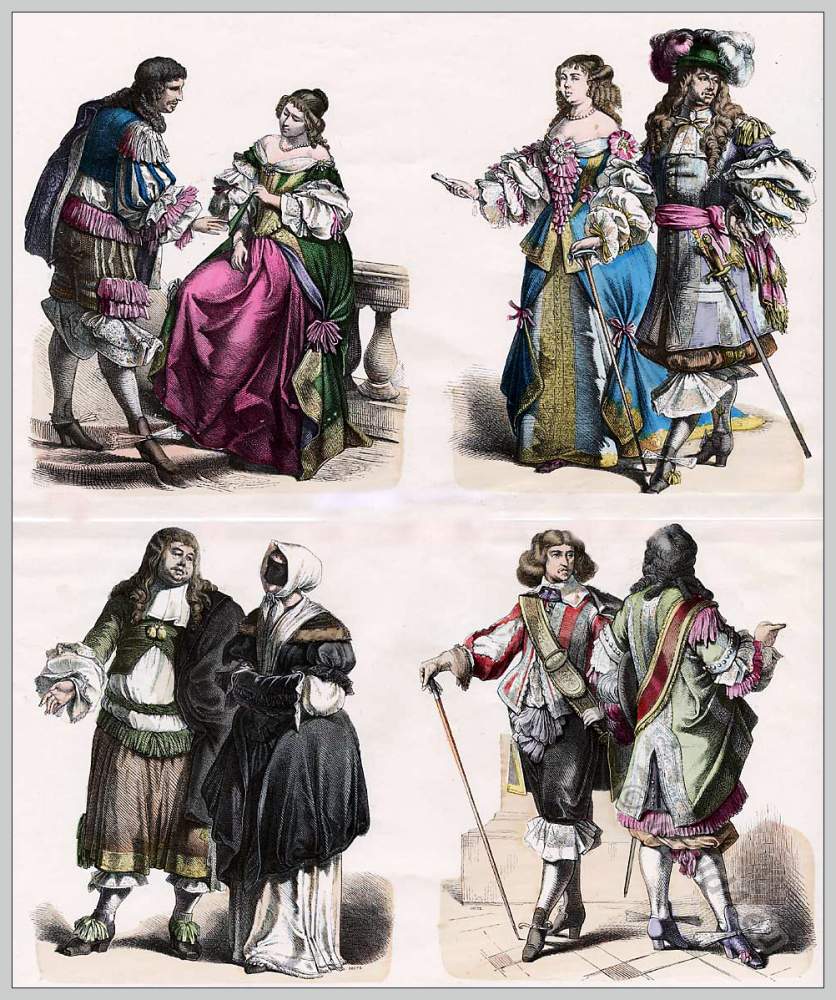
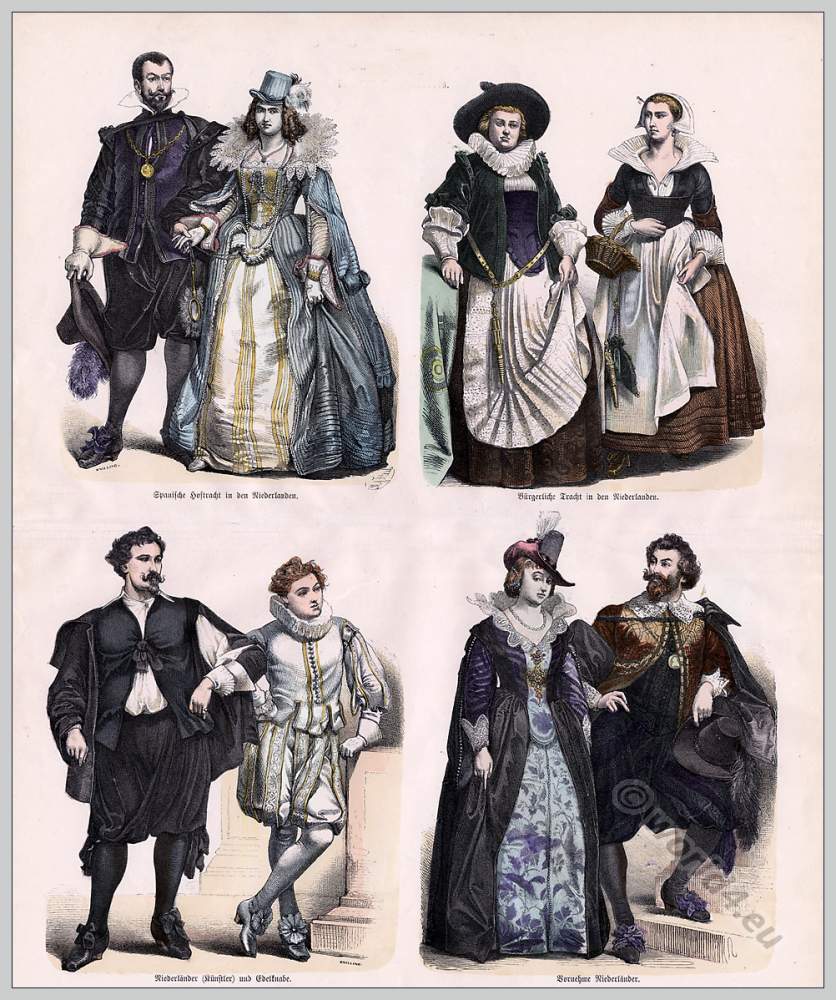
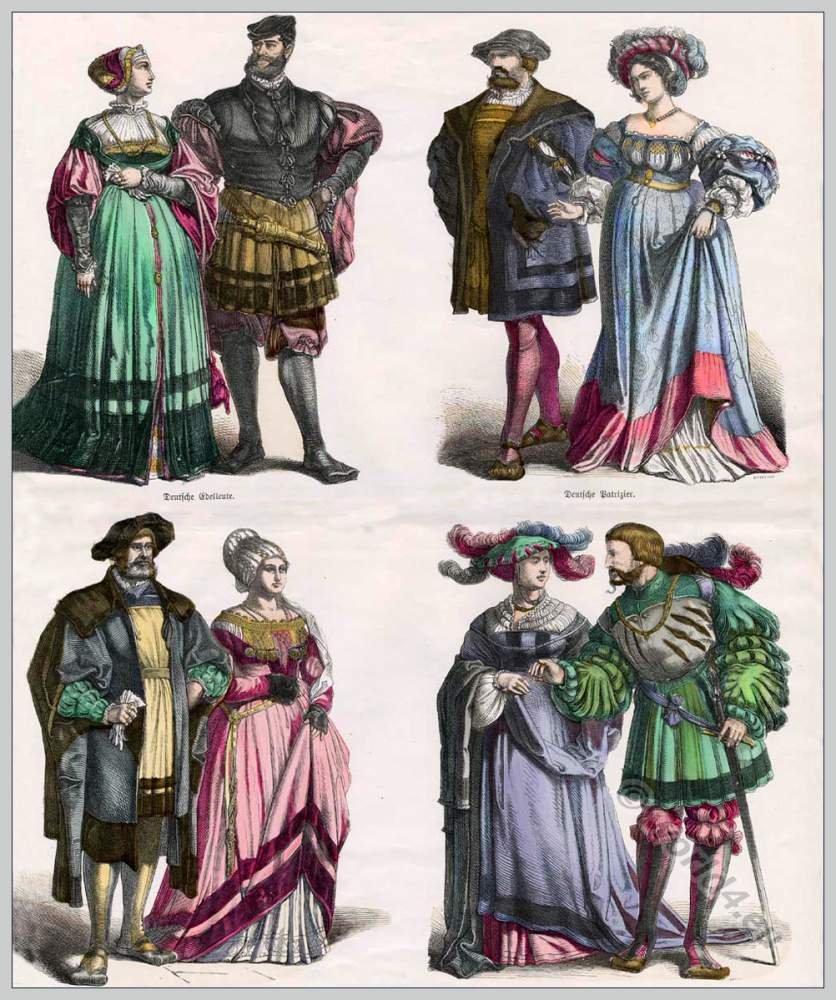
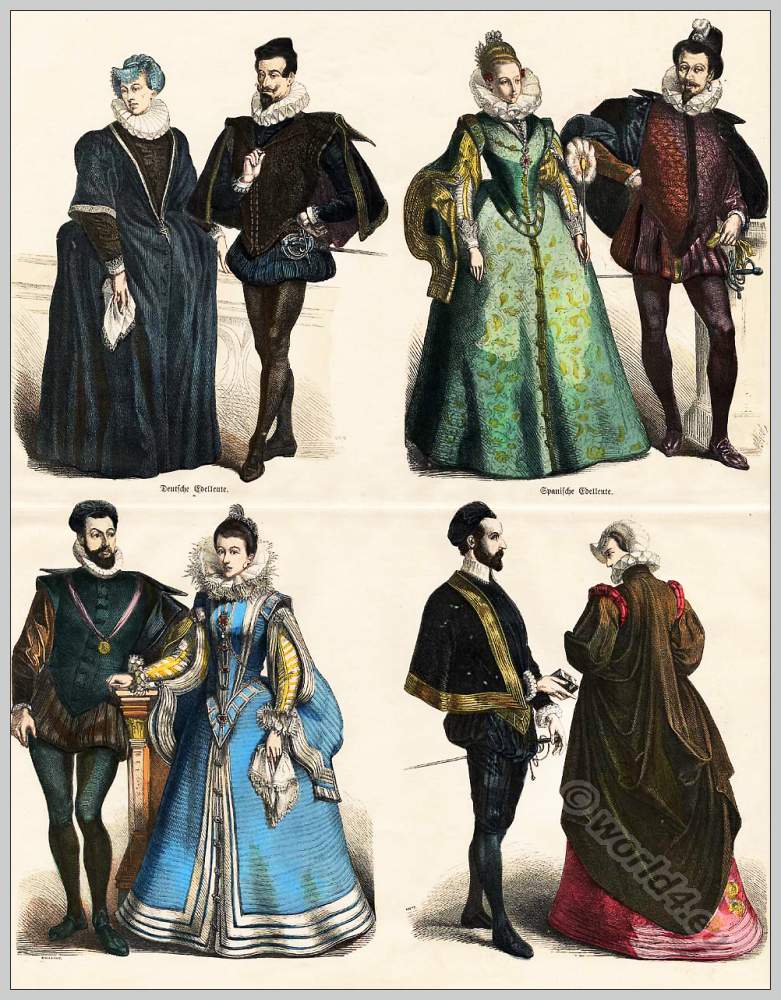
Description Costume History XVI. and XVII. century.
- German and France costumes 1580.
- German costumes 1520.
- German and French renaissance fashion 1520.
- Burgundy and German fashion 1550.
- Polish and Russian costumes 16th century.
- Italian Renaissance costumes 16th century.
- 16th and 17th century. Ecclesiastical robes.
- German costumes first third of the 16th century.
- Italy fashion end of the 16th century.
- German lansquenets 16th century.
- French nobility fashion 16th century.
- English Tudor fashion in the 16th century.
- English Baroque fashion in the 16th and 17th century.
- German renaissance costumes in the 16th century.
- Costumes from Friesland in the 16th century.
- Holland, Bohemia, Spain, England. 16th and 17th century costumes
- German costumes 16th century.
Costumes 17th – 18th Century.
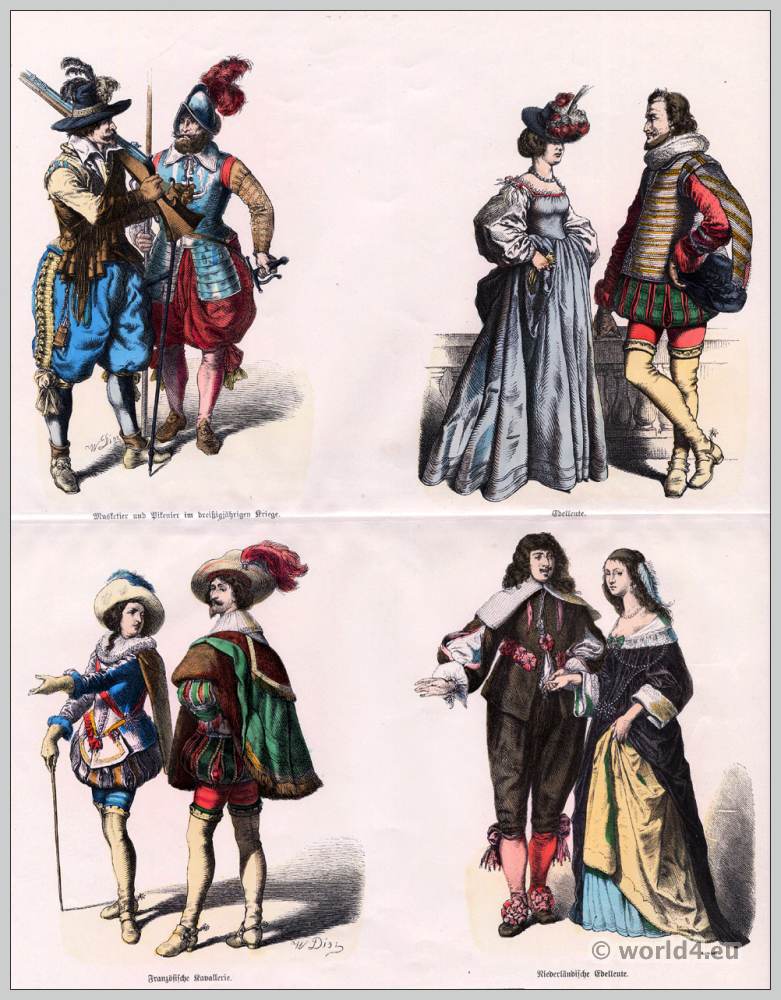
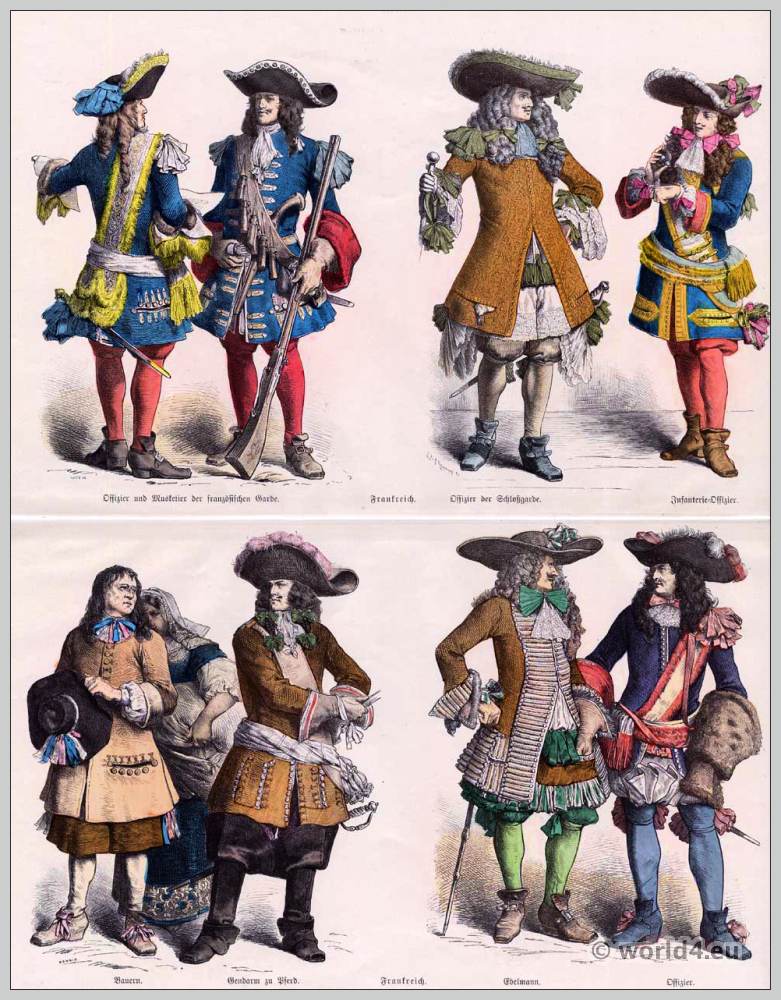

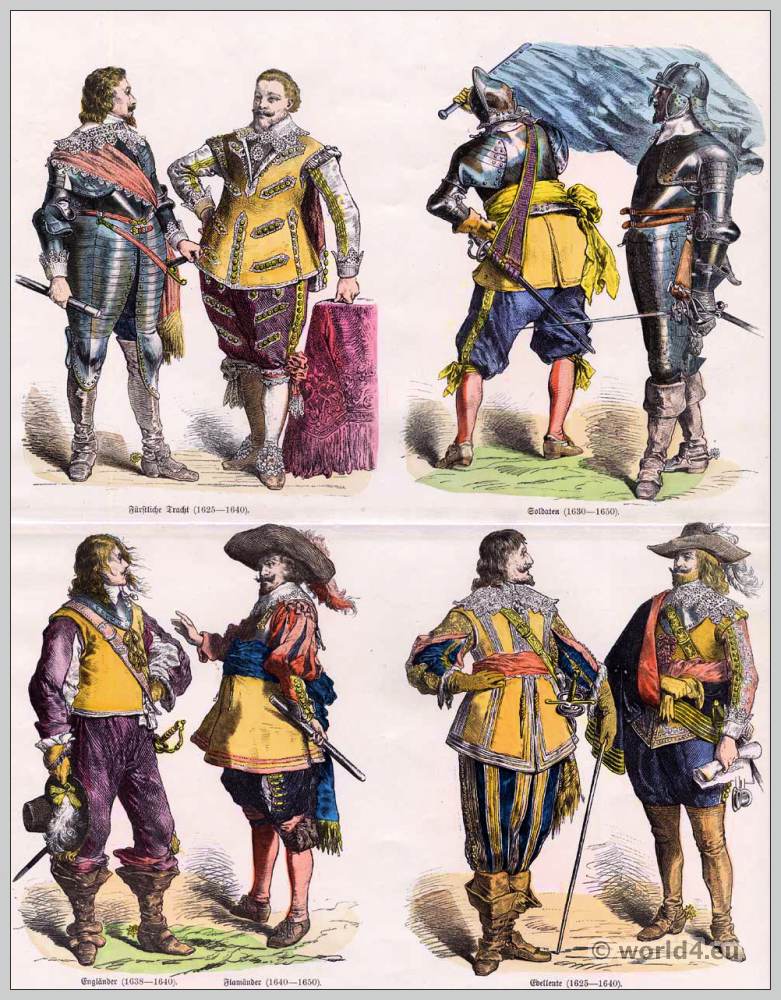
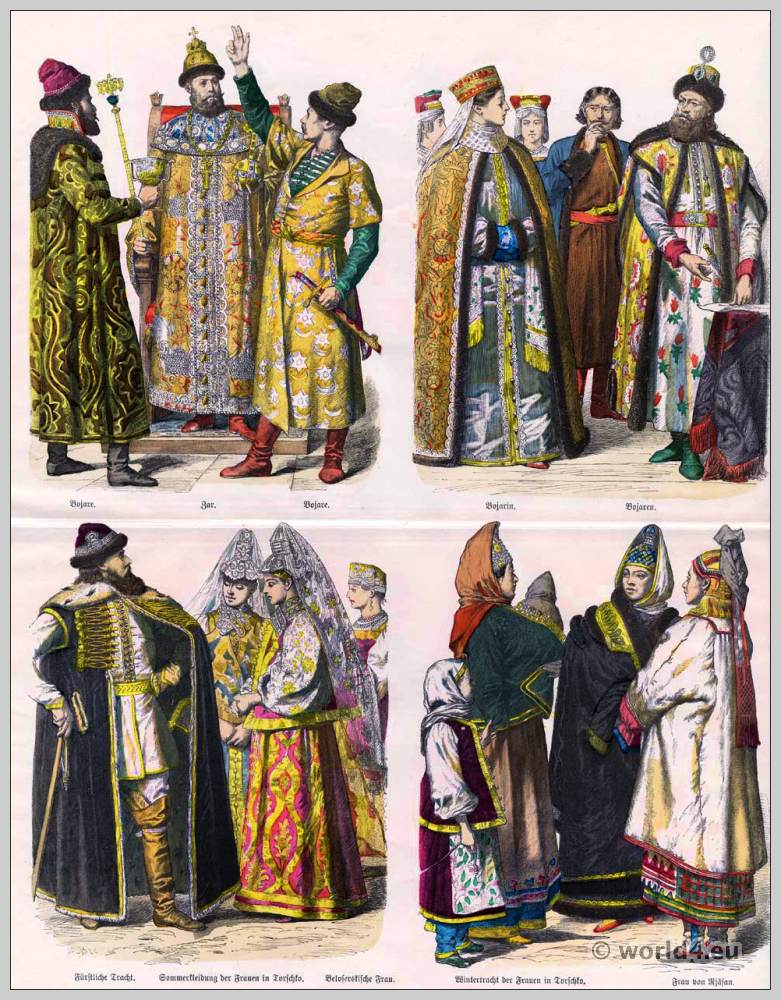
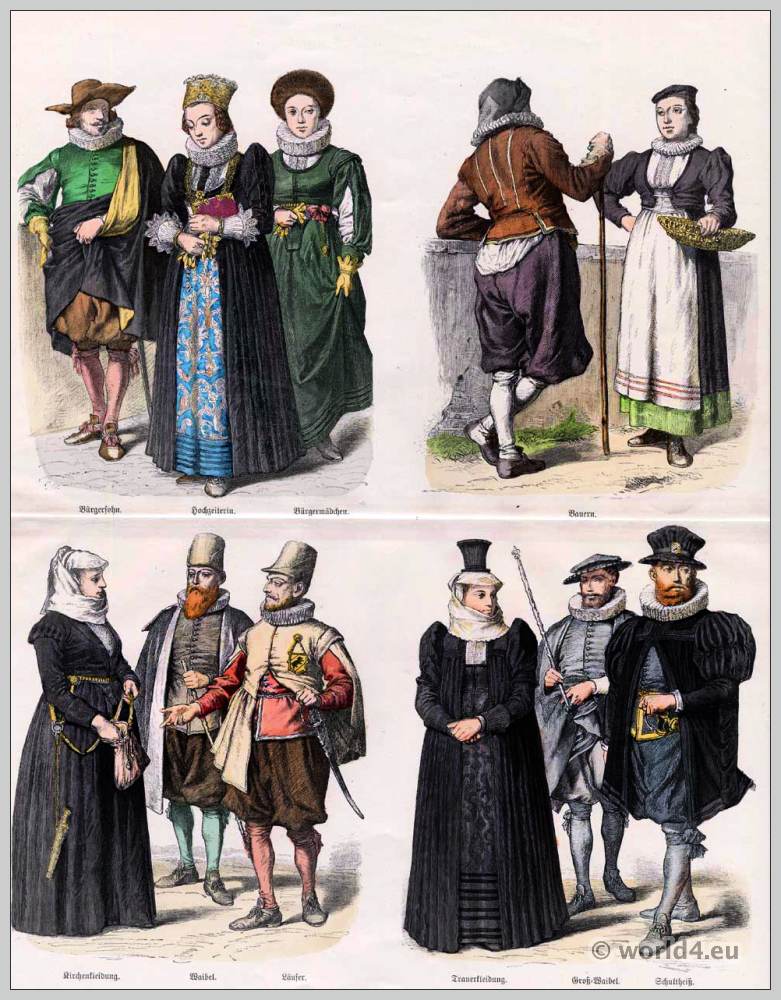
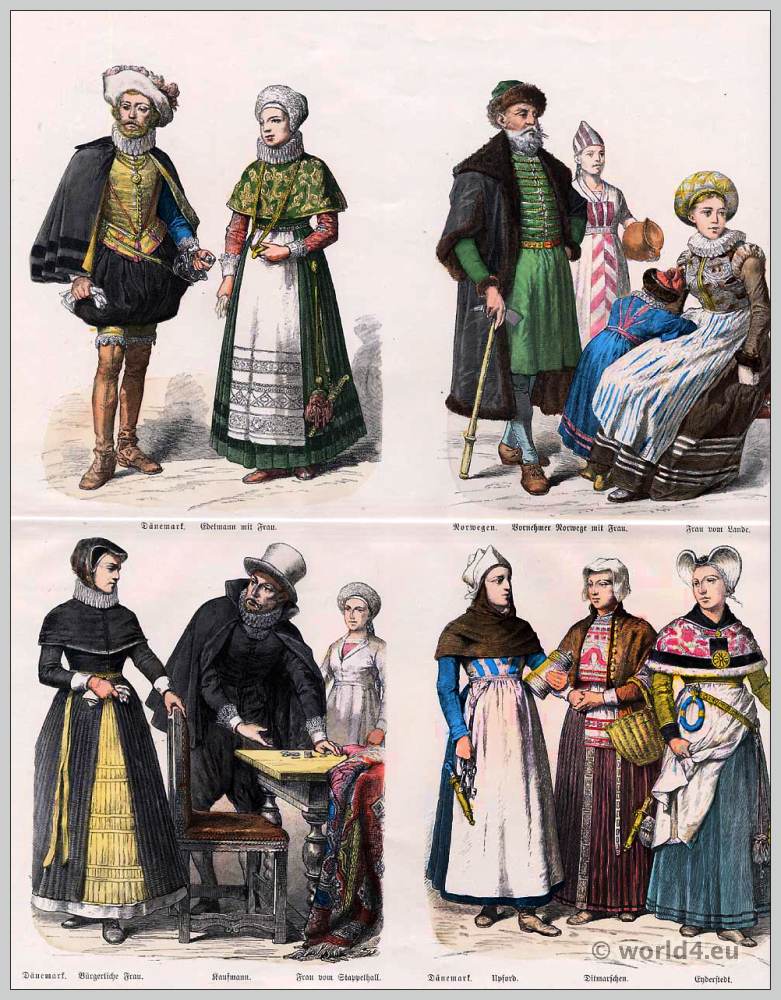

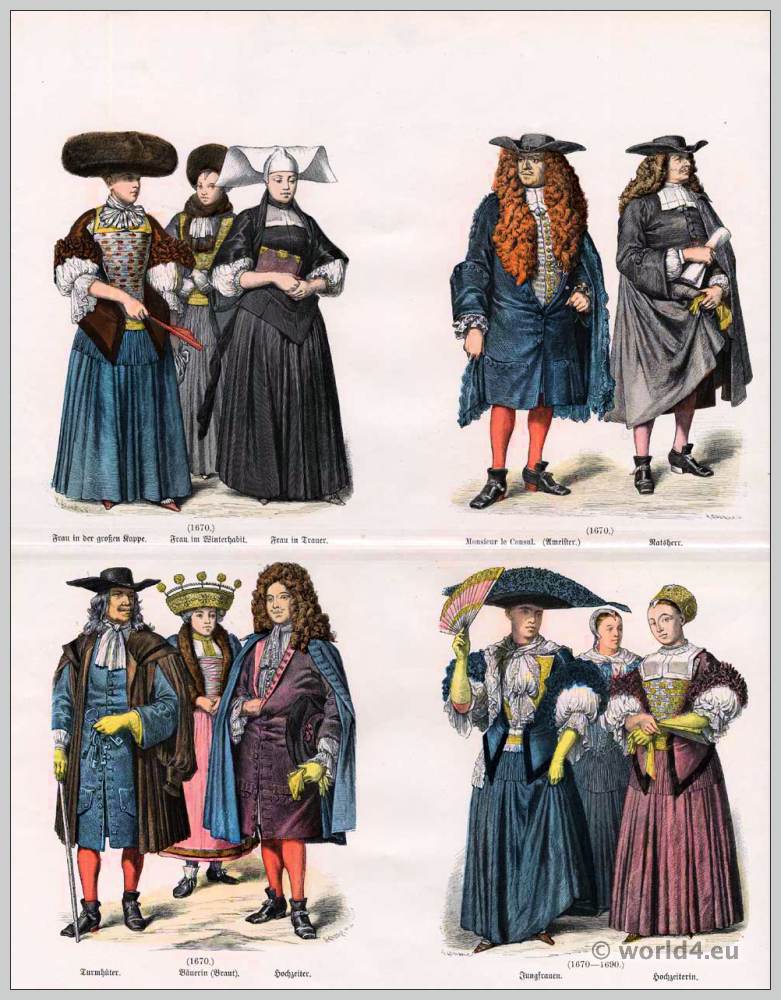
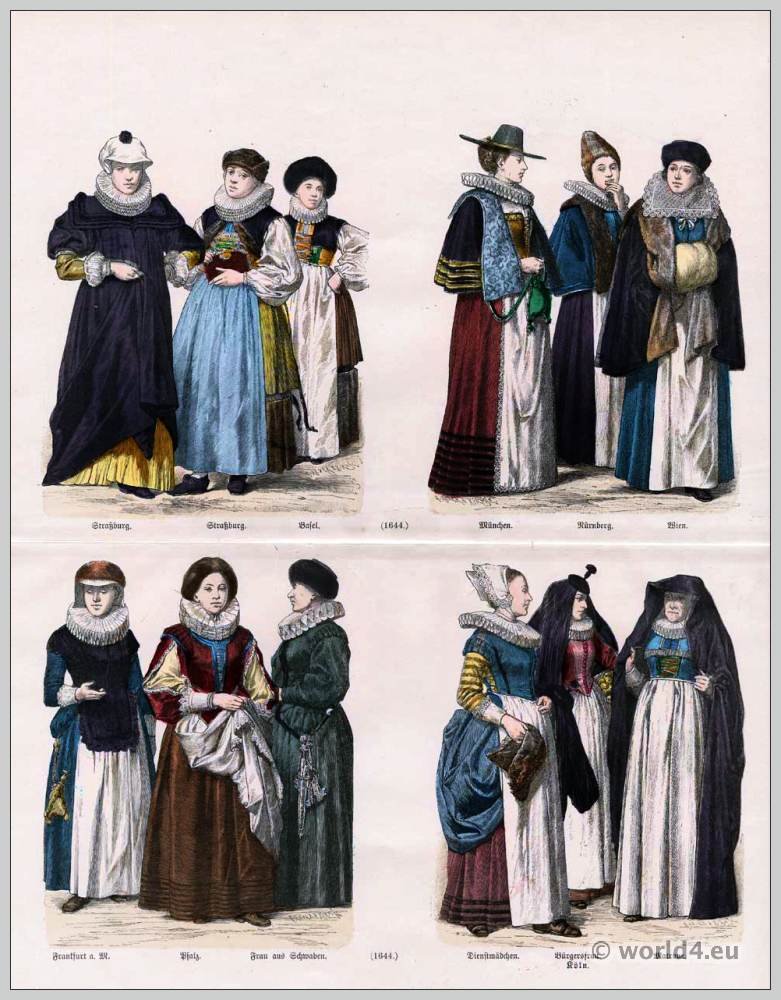


Description Costume History XVII. and XVIII century.
- Costumes in the 17th Century. (Musketeer and Pikeman)
- French 17th century.
- German soldiers 17th century.
- Fleming, English and German Princely costumes.
- Russian costumes. 17th and 18th Century. (Tsar, Boyar, Belorussian garb.)
- Swiss costumes 17th century.
- Norway and Denmark 17th Century.
- French baroque costumes 17th century. (Ancien Régime, Galante Conduite)
- Strasbourg clothes in 17th Century.
- German fashion in the 17th Century.
- Nobility fashion end of the 17th and early 18th Century.
- English fashion in the 17th Century.
Costumes 18th – 19th Century.
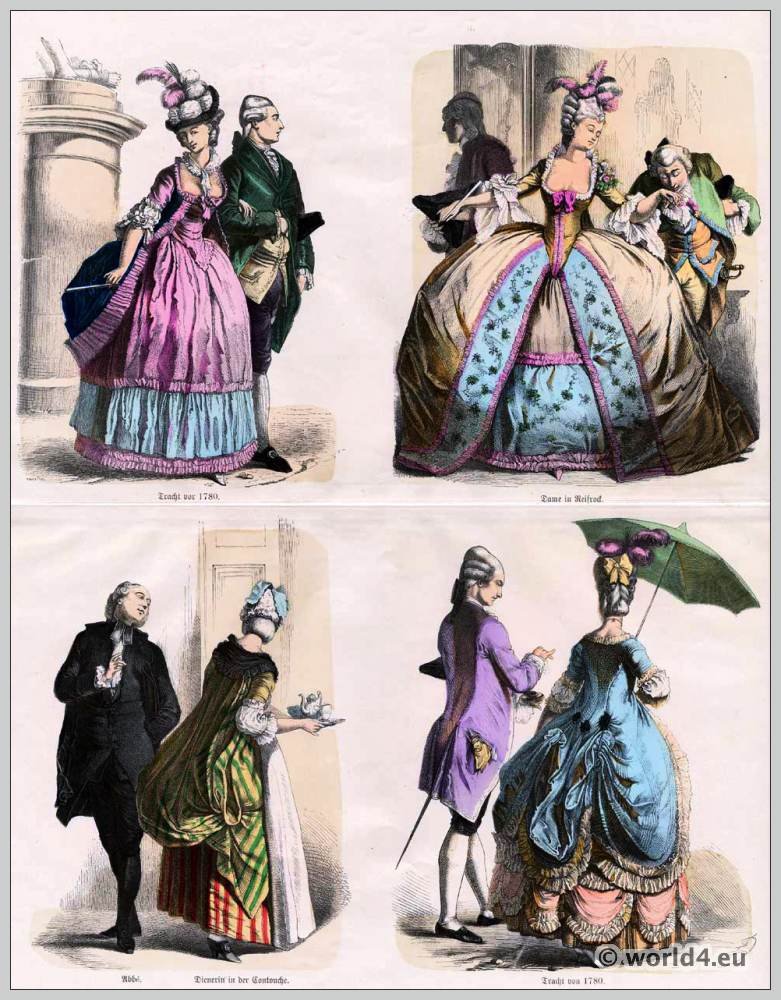

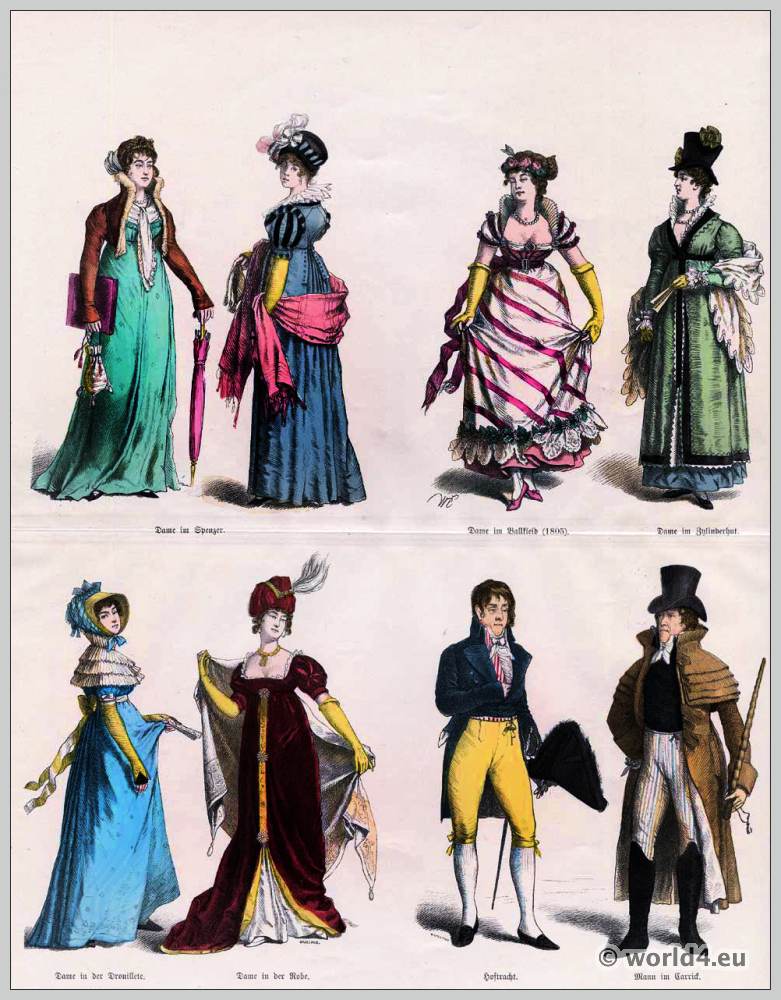
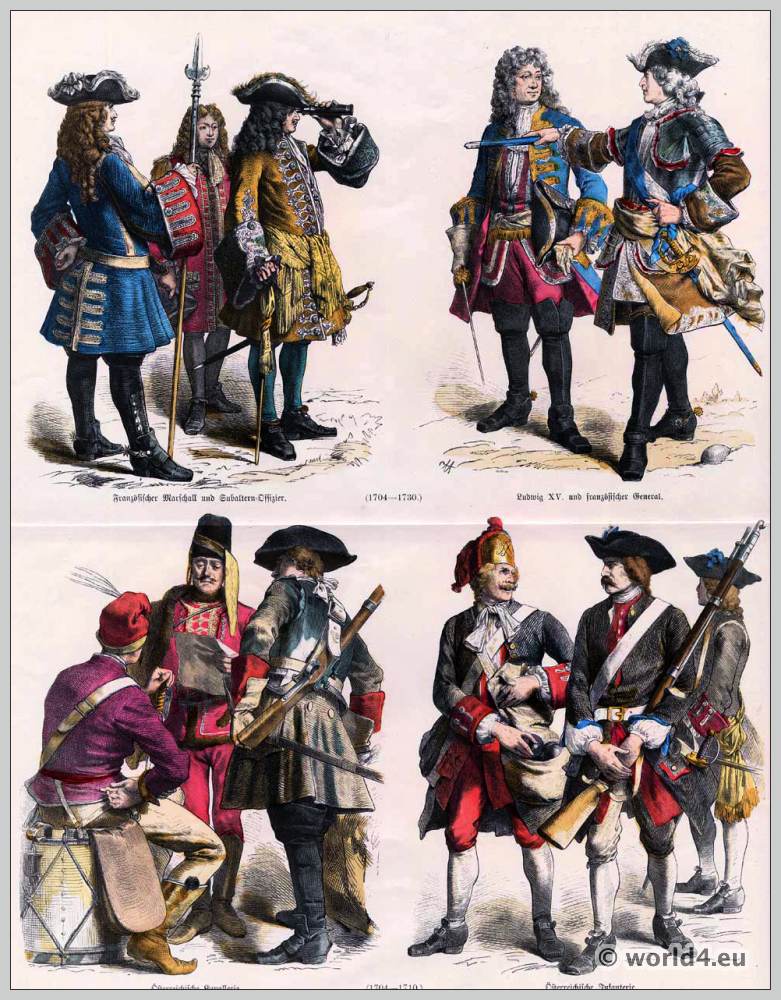

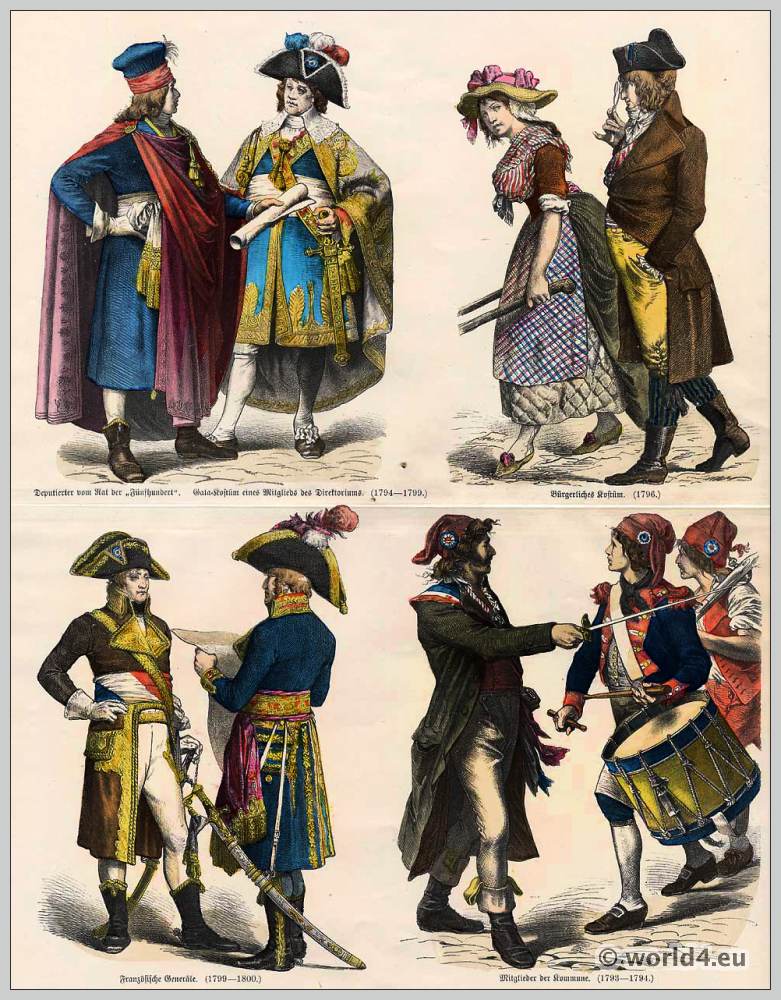
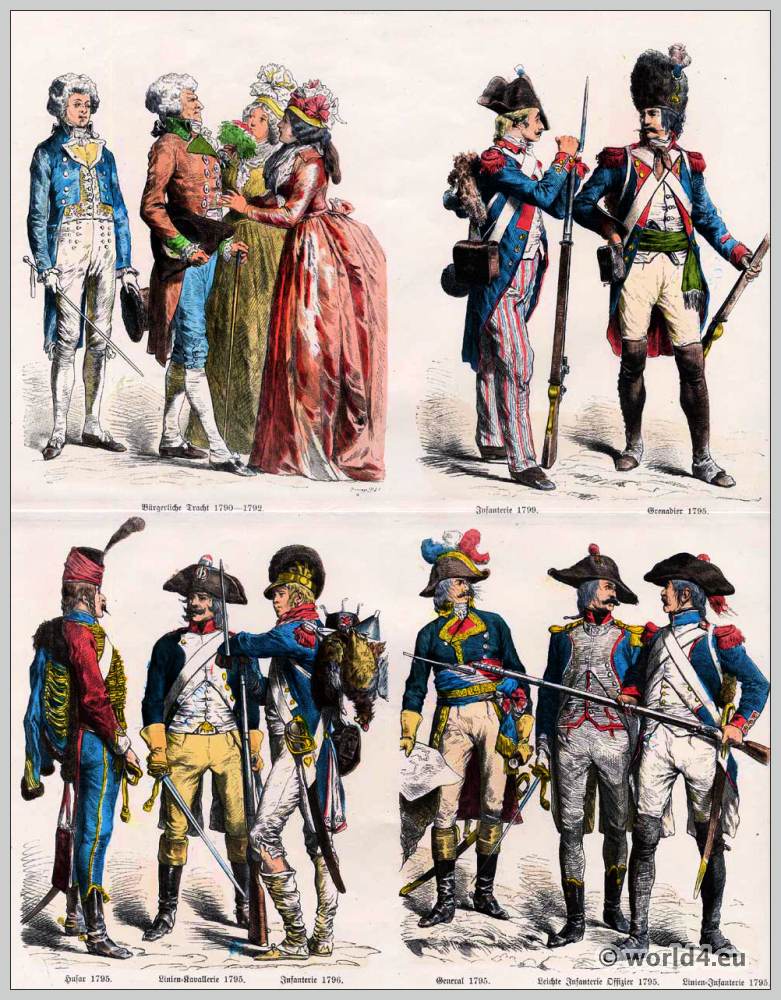
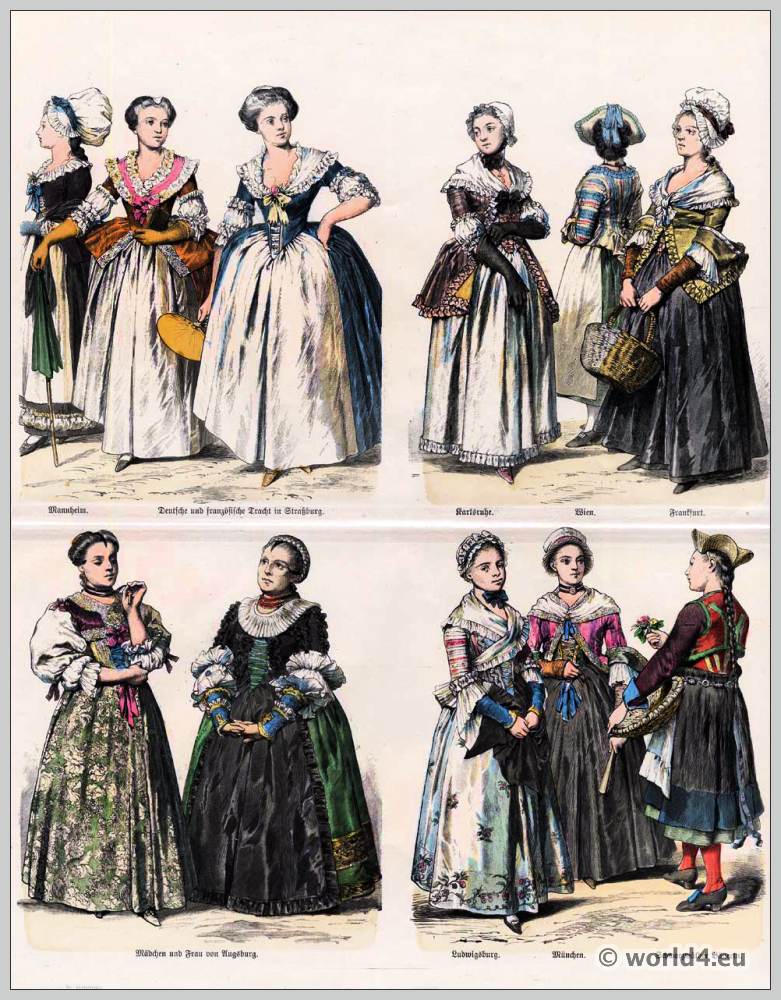
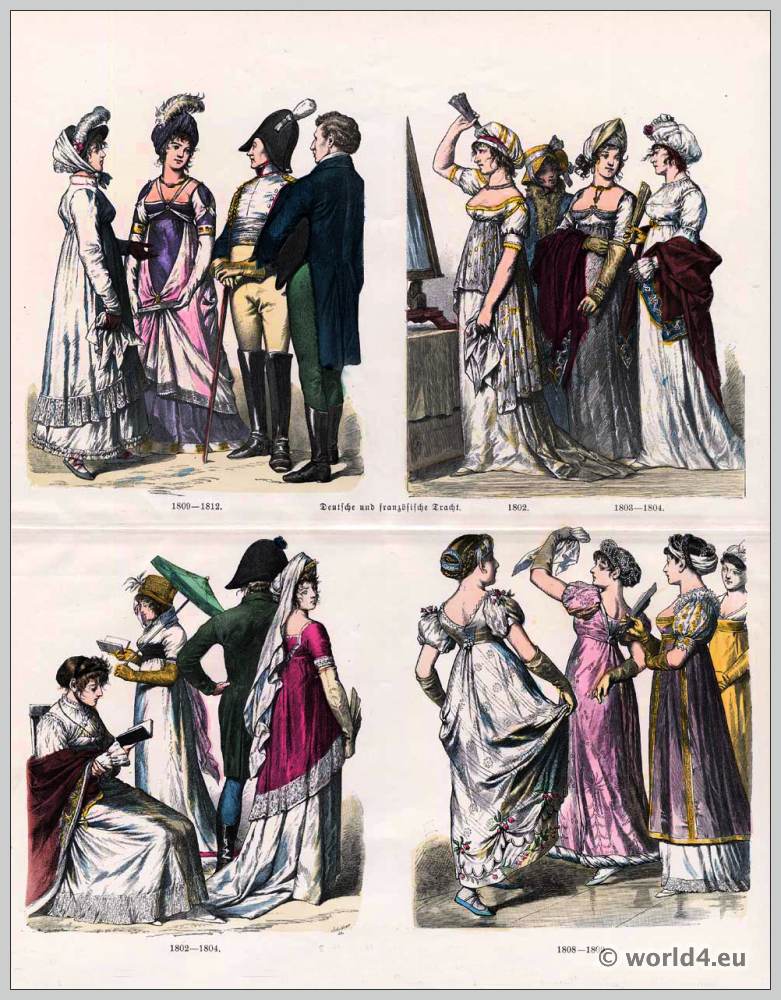
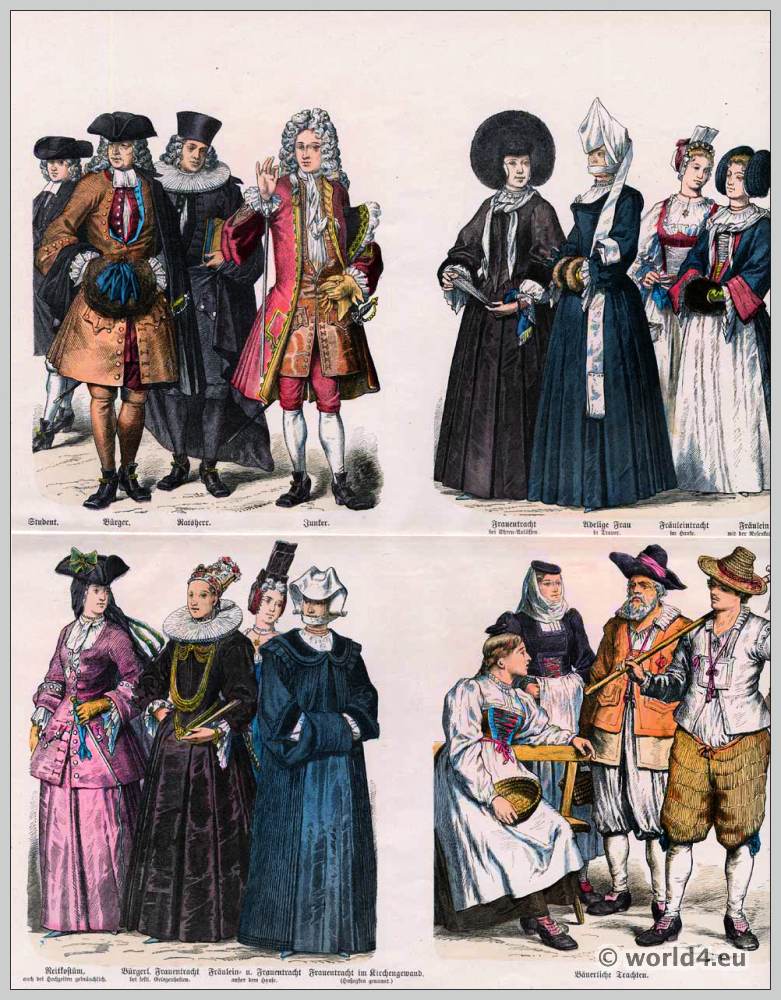
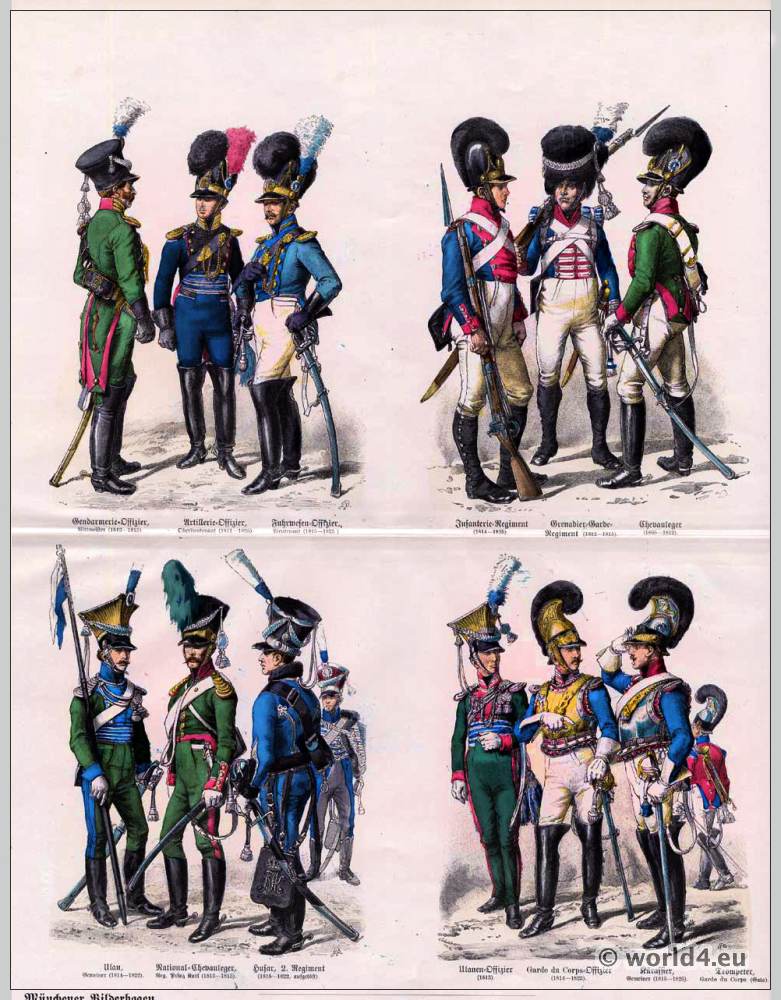

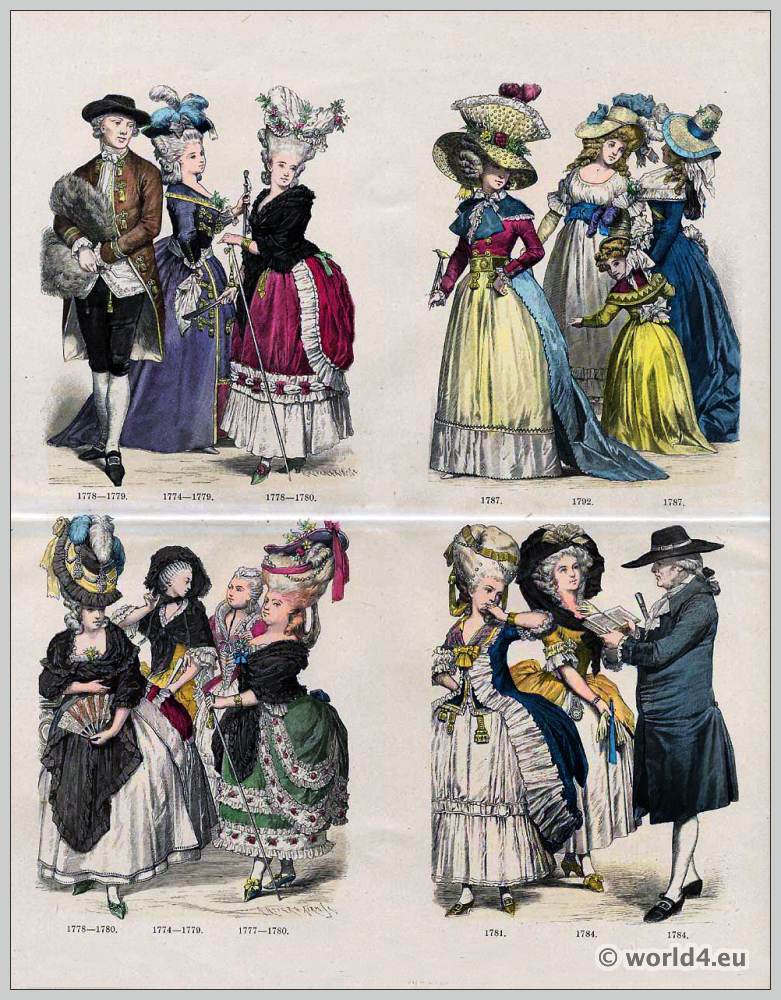
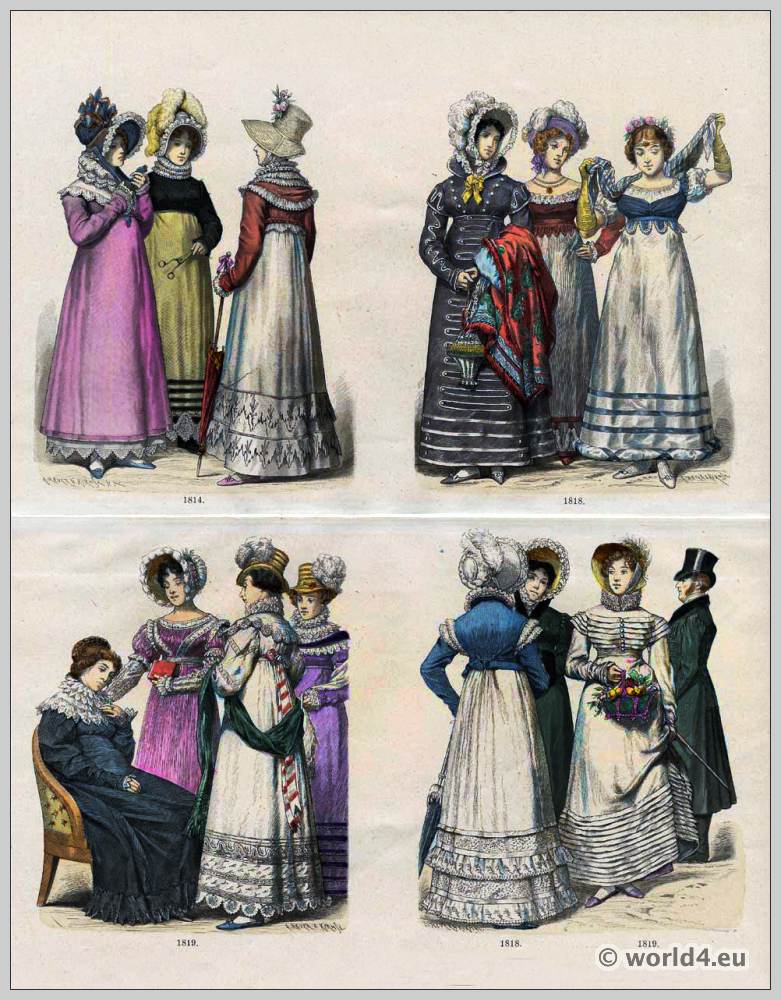
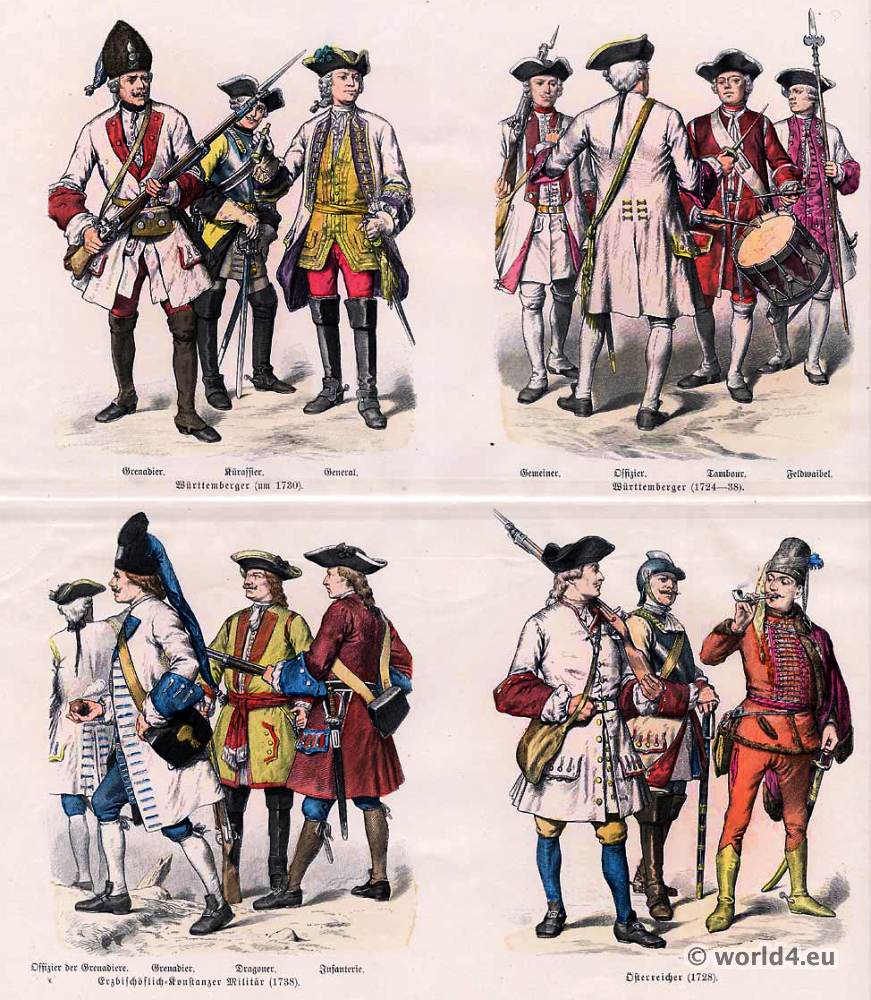
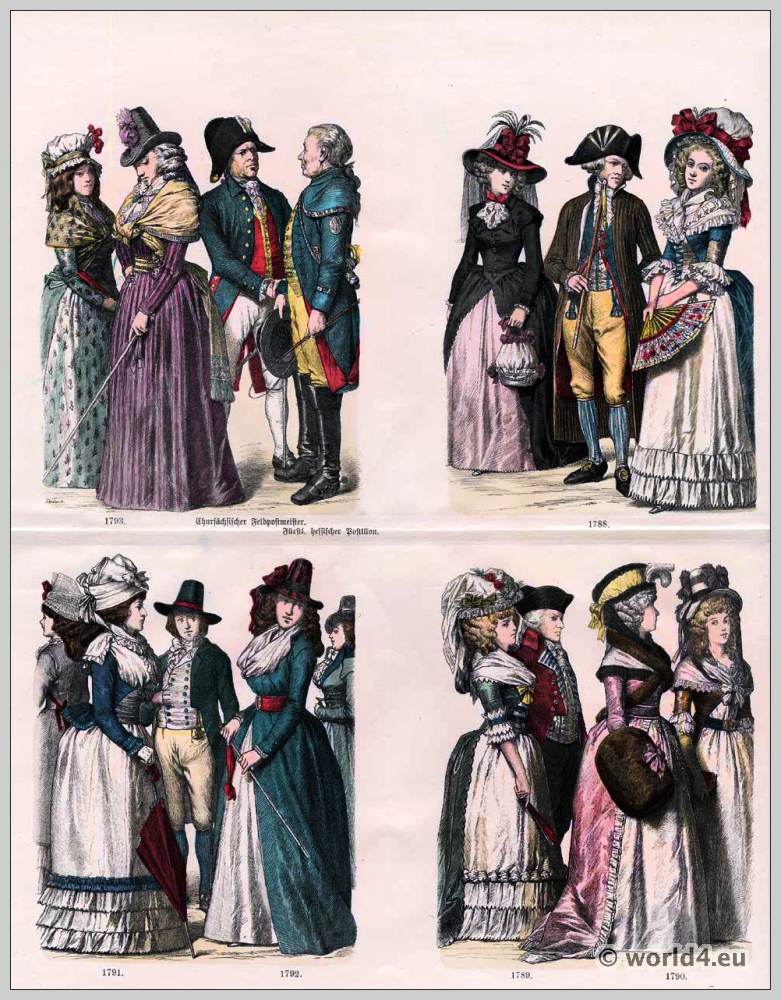
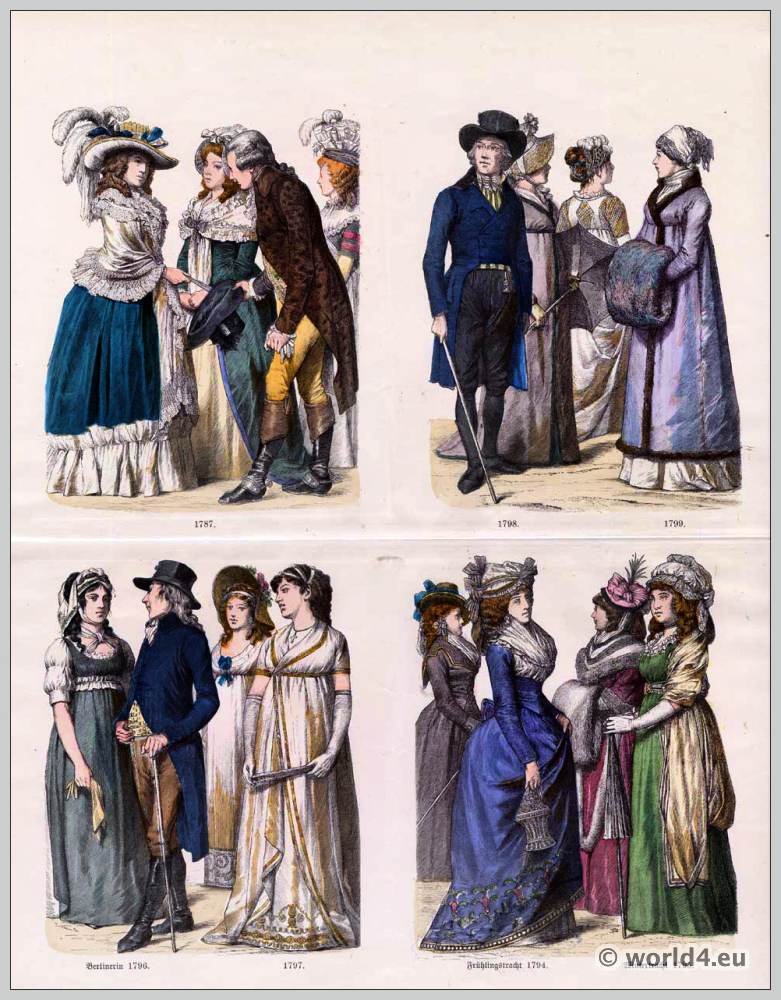
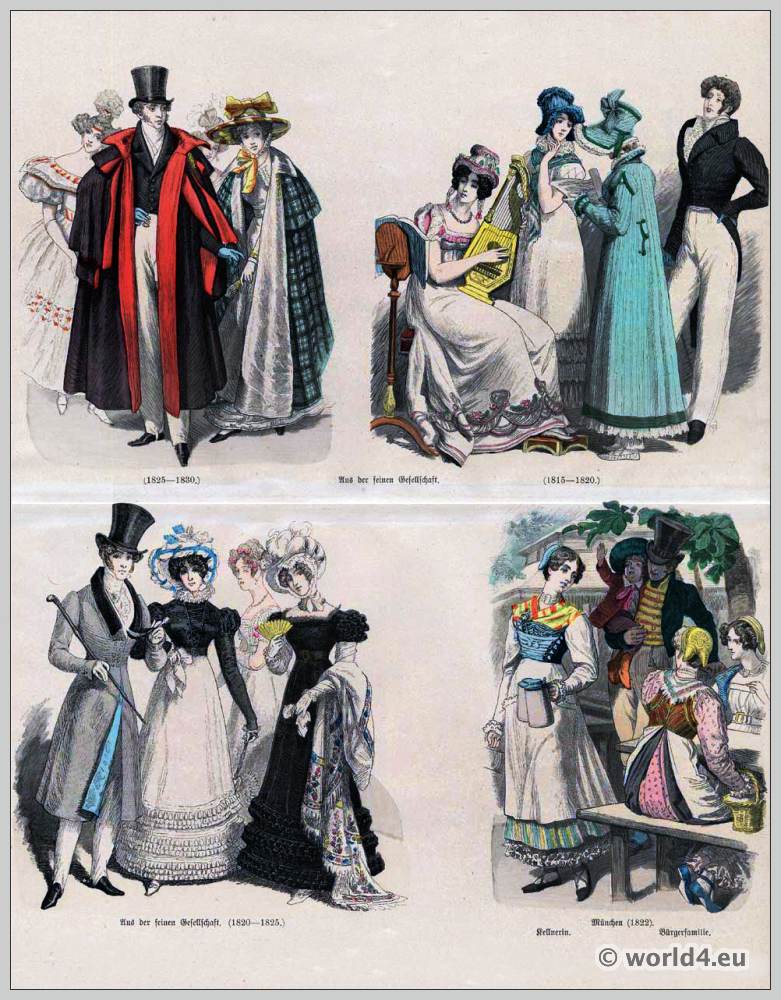
Description Costume History XVIII and XIX century.
- Fashion in the first decade of the 19th century. German Empire.
- France and Austrian Military uniforms 18th century.
- Austrian and Prussian Military uniforms 18th century.
- French Revolution. Directory Costumes 18th century
- French Republic costumes 18th century.
- German and French civil costumes. 18th century.
- German and French Empire fashion 19th Century.
- Swiss costumes from the canton of Zurich, 18th Century.
- Bavarian Military uniforms in the 19th century.
- Turkish costumes Ottoman Empire.
- French Rococo fashion in the 18th century.
- Empire costumes first third of the 19th Century.
- German and Austrian military in the 18th century.
- German fashion in the 18th century.
- German fashion in the last third of the 18th century.
- German Biedermeier period fashion 19th century.

Related
Le Costume historique by Auguste Racinet was originally published in France 1876-1888 and was regarded as the biggest and best study of clothing that had ever been written. He presented the history of clothing and style from antiquity to the end of the 19th Century – from the clothes of the ancient Etruscans on the costume of the Inuit to the French Haute Couture 19th Century.
Examples of Franz of Lipperheide published costumes.
- Culture and fashion of Mesopotamia. Assyria, Babylonia and Sumer.
- Egyptian costume history.
- Ancient Greek fashion and costume history
- Minoan costume history. Ancient Greek, Crete.
- The Amazons. Female warrior.
- Ancient Roman costume history. B.C. 53 to A.D. 450..
- Costume history of the Persians and other Asiatics.
- Ancient British period. Fashion history of England. Bronze age.
- The Byzantine Fashion History 5th to 6th century.
- Collection of ancient costumes Egyptian, Greek, Roman and others.
- The Roman Tunica or Greek Chiton.
- The Roman Paenula. The cowl or hood.
- On the origin of the pants by Max Marcuse
- The Toga and the manner of wearing it.
- The Gallic and Gallo-Roman costume period.
- The shields of the Gauls. Clans in the Roman Empire.
- The Barbarian Invasions. The Migration Period in Europe, 395-527 A. D.
- Roman legionary in full armor.
- Roman Britain. Maps, Places, Tribes. Historical atlas.
- Celt and Roman. History of England 43 BC to 440 AD.
- Gallic and Gallo-Roman helmets of Celtic warriors.
- Britannia Saxonica. Chronology of the Anglo-Saxons.
- The Roman Paenula. The cowl or hood.
- Roman, Greece and Egypt. The Corset and the Crinolin fashion history.
- Frankish Merovingian costume history. 4th and 5th century.
- Byzantine costume history. 5th to 6th century.
- The Carolingian fashion period 752-987. Reign of Charlemagne.
- The Carolingian Fashion Period 987 to 1270.
- Europe in the time of Charles the Great 768 – 814. Maps and Places.
- Alfred the Great. The first English king.
- King Harold II. Last Anglo-Saxon king of England.
- Monachism. Monastic costumes history.
- History of costumes from ancient until 19th century

